Nava Atlas's Blog, page 57
March 29, 2020
Optimistic Quotes from Pollyanna — and on Being “a Pollyanna”
A “Pollyanna,” according to Merriam-Webster’s Dictionary, is “a person characterized by irrepressible optimism and a tendency to find good in everything.” Following is a selection of quotes from Pollyanna — the 1913 novel by Eleanor H. Porter that gave rise to this enduring term.
You’ll also find some contemporary quotes on what it means to be — or not to be — “a Pollyanna.”
Pollyanna was first published in the World War I era — hardly the time, it would seem, for a book whose newly orphaned main character was as sunny and optimistic as they come. But somehow, the book struck a nerve and was an immediate hit with children as well as adults.
In a nutshell, Pollyanna is an 11-year-old orphan who comes to live under the care of her dour spinster aunt Polly in a Vermont town. Soon, her “glad game” — finding the good in any situation— wins over the residents of the town and transforms it into a place of hope and joy.
It didn’t take long for Pollyanna to sell a million copies. It was translated into numerous languages and adapted for stage, including a successful Broadway run. A number of film versions have appeared over the years, the best known of which was the 1960 Disney adaptation starring Hayley Mills in the title role.
Pollyanna is replete with literary clichés of the era — the exuberant orphan (think Anne of Green Gables and Rebecca of Sunnybrook Farm) who wins everyone over; the stern spinster aunt whose heart softens; the downtrodden, kind servants. The writing is flat, sentimental, and often downright corny. Yet there’s something about Pollyanna’s optimism that’s been irresistible to generations of readers.
. . . . . . . . . .
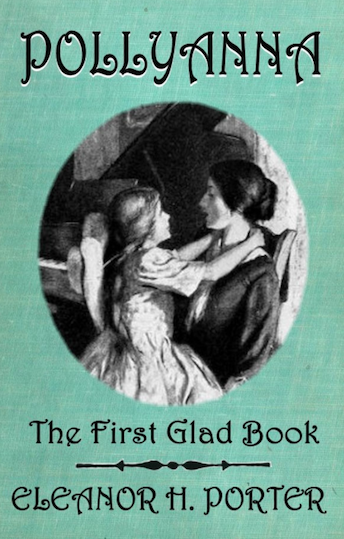
Pollyanna by Eleanor H. Porter: Revisiting the Eternal Optimist:
. . . . . . . . . .
“There is something about everything that you can be glad about, if you keep hunting long enough to find it.”
. . . . . . . . . .
“I know, father-among-the-angels, I’m not playing the game one bit now—not one bit; but I don’t believe even you could find anything to be glad about sleeping all alone ‘way off up here in the dark—like this. If only I was near Nancy or Aunt Polly, or even a Ladies’ Aider, it would be easier!”
. . . . . . . . . .
“And most generally there is something about everything that you can be glad about, if you keep hunting long enough to find it.”
. . . . . . . . . .
“She had been too busy wishing things were different to find much time to enjoy things as they were.”
. . . . . . . . . .
“Oh, but Aunt Polly, Aunt Polly, you haven’t left me any time at all just to — to live.”
“To live, child! What do you mean? As if you weren’t living all the time!”
“Oh, of course I’d be BREATHING all the time I was doing those things, Aunt Polly, but I wouldn’t be living. You breathe all the time you’re asleep, but you aren’t living. I mean living —doing the things you want to do: playing outdoors, reading (to myself, of course), climbing hills, talking to Mr. Tom in the garden, and Nancy, and finding out all about the houses and the people and everything everywhere all through the perfectly lovely streets I came through yesterday. That’s what I call living, Aunt Polly. Just breathing isn’t living!”
. . . . . . . . . .
“It’s funny how dogs and cats know the insides of folks better than other folks do, isn’t it?”
. . . . . . . . . .
“What men and women need is encouragement. Their natural resisting powers should be strengthened, not weakened…. Instead of always harping on a man’s faults, tell him of his virtues. Try to pull him out of his rut of bad habits. Hold up to him his better self, his REAL self that can dare and do and win out!”
. . . . . . . . . .
“The influence of a beautiful, helpful, hopeful character is contagious, and may revolutionize a whole town…. People radiate what is in their minds and in their hearts. If a man feels kindly and obliging, his neighbors will feel that way, too, before long. But if he scolds and scowls and criticizes—his neighbors will return scowl for scowl, and add interest!… When you look for the bad, expecting it, you will get it. When you know you will find the good—you will get that …”
. . . . . . . . . .
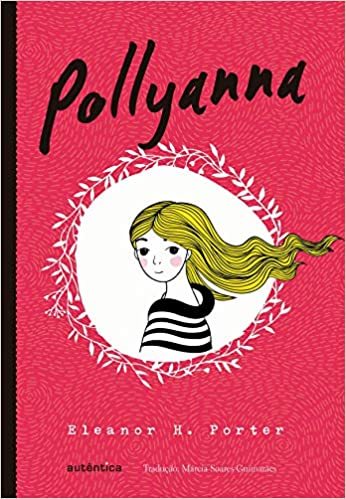
Pollyanna by Eleanor H. Porter on Amazon*
. . . . . . . . . .
“Oh, but your eyes are so big and dark, and your hair’s all dark, too, and curly,” cooed Pollyanna. “I love black curls. (That’s one of the things I’m going to have when I get to Heaven.) And you’ve got two little red spots in your cheeks. Why, Mrs. Snow, you ARE pretty! I should think you’d know it when you looked at yourself in the glass.”
. . . . . . . . . .
“Well, you see, since I have been hurt, you’ve called me ‘dear’ lots of times—and you didn’t before. I love to be called ‘dear’—by folks that belong to you, I mean. Some of the Ladies’ Aiders did call me that; and of course that was pretty nice, but not so nice as if they had belonged to me, like you do. Oh, Aunt Polly, I’m so glad you belong to me!”
. . . . . . . . . .

. . . . . . . . . .
Quotes on being “a Pollyanna”
“I have been accused of being a Pollyanna, but I think there are plenty of people dealing with the darker side of human nature, and if I am going to write about people who are kind and generous and loving and thoughtful, so what?” (Ann Patchett, author)
. . . . . . . . . .
“Balance in life is the key, as Aristotle taught us. Nobody likes a naive Pollyanna, but neither do we like to be around people who are constantly complaining and finding fault.” (Mark Skousen, economist)
. . . . . . . . . .
“My husband and I met on OK Cupid. We went out on our little coffee date, and I knew right away he was my husband. He’s a handsome, smarty-pants architect from Tokyo. On our first date, I said, ‘I wake up like this. I’m Pollyanna Sunshine, and I’m not for everyone’.” (Geneva Carr, actress)
. . . . . . . . . .
“Whenever someone calls me a Pollyanna, I consider it to be the highest of compliments. This courageous girl finds a community that has been torn apart with hate, fear, and pain and brings it love, courage and healing. Isn’t that what our world today needs more than anything?” (Joe Tye, author and inspirational speaker)
“I don’t mean to sound like a Pollyanna, but for me, New York is the ideal because of the diversity here. ‘Billy on the Street’ is really informed by that.” Billy Eichner, comedian
. . . . . . . . . .
“I am a bit of a Pollyanna — I spend most of my day happy.” (Ted Danson, actor)
. . . . . . . . . .
“I don’t find any real rivalries with crime and thriller writers anyway. That might sound a little Pollyanna, but for the most part the writers I compete with, if you want to use that word, it’s a pretty friendly rivalry. I think we all realize that the boat rises and sinks together.” (Harlan Coben, author)
. . . . . . . . . .
“In all probability the Human Genome Project will, someday, find that I carry some recessive gene for optimism, because despite all my best efforts I still can’t scrape together even a couple days of hopelessness. Future scientists will call it the Pollyanna Syndrome, and if forced to guess, I’d say that mine has been a way-long case history of chasing rainbows.” (Chuck Palahniuk, author)
. . . . . . . . . .
“Millions of Americans would still despair in the eight long years of the Depression that lay ahead and many of their individual dreams would be dashed on the rocks of economic hardship. But collectively, the country was in a new place, with a new confidence that the federal government would actively try to solve problems rather than fiddle or cater to the rich. Hope was no longer for Pollyannas; the cynics about the American system were in retreat.” (Jonathan Alter, journalist)
. . . . . . . . . .
“I prefer to see myself as the Janus, the two-faced god who is half Pollyanna and half Cassandra, warning of the future and perhaps living too much in the past — a combination of both.” (Ray Bradbury, author)
. . . . . . . . . .
“Be a balanced optimist. Nobody is suggesting that you become an oblivious Pollyanna, pretending that nothing bad can or ever will happen. Doing so can lead to poor decisions and invites people to take advantage of you. Instead, be a rational optimist who takes the good with the bad, in hopes of the good ultimately outweighing the bad, and with the understanding that being pessimistic about everything accomplishes nothing. Prepare for the worst but hope for the best — the former makes you sensible, and the latter makes you an optimist.” (Dale Carnegie, author and motivational speaker)
. . . . . . . . . .
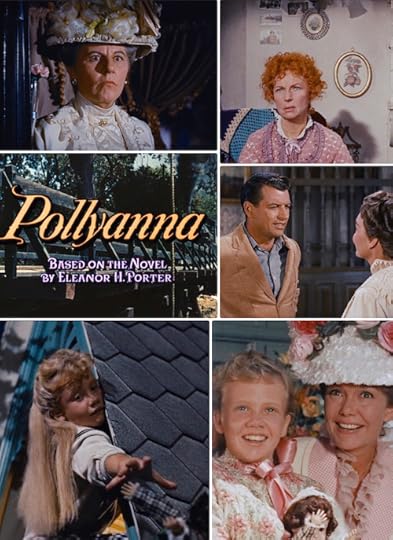
The 1960 film adaptation starring Hayley Mills
. . . . . . . . . .
More about Pollyanna by Eleanor H. Porter
Wikipedia
Reader discussion on Goodreads
Pollyanna – 1960 film
Read Pollyanna online at Project Gutenberg
Listen to Pollyanna on Librivox
. . . . . . . . . .
*This is an Amazon Affiliate link. If the product is purchased by linking through, Literary Ladies Guide receives a modest commission, which helps maintain our site and helps it to continue growing!
The post Optimistic Quotes from Pollyanna — and on Being “a Pollyanna” appeared first on Literary Ladies Guide.
March 26, 2020
10 Classic Cuban Women Authors to Discover
Cuban literature began gaining the recognition it deserved at the start of the 19th century. Here we’ll take a look at ten inspirational Cuban women authors that deserve to be discovered and read.
Gertrudis Gomez de Avellaneda, the earliest of the writers listed here, focused on abolitionist characters. After the abolition of slavery in Cuba in 1886, the focus of Cuban literature shifted to themes of independence, freedom, social protest, and personal and universal issues.
Poetry was a widely practiced genre for Cuban women writers, although they produced many short stories, essays, novels, autobiographies, ethnographical studies, and testimonial literature.
Due to its rich history, Cuban literature is considered among the most influential in the Spanish-speaking world, and women have long been an intrinsic part of its development.
. . . . . . . . . .
Gertrudis Gómez de Avellaneda (1814 – 1873)
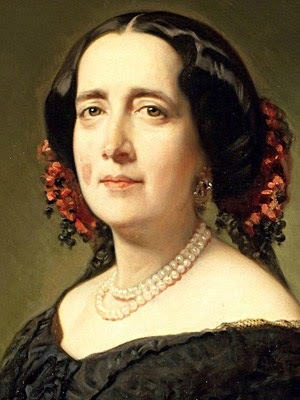
Born in Puerto Principe, Cuba, Gertrudis Gómez de Avellaneda was a Cuban-Spanish playwright considered one of the greatest of romantic writers and women poets of the 19th century.
Though she didn’t live in Cuba for much of her life, having spent much of it in Spain, she had a major influence on Cuban literature. Avellaneda’s timeless style, romantic vision, and personal suffering combined to create some of the most heart-rending literature in the Spanish language.
Based on historical models, Avellaneda’s plays are distinctive due to their poetic diction and lyrical passages. Her first poems, published under her nom de plume La Peregrina, were collected in 1841 and combined into a volume called Poesias Liricas (Lyrical Poems).
Though some of her works are now almost entirely forgotten, including the antislavery Sab (1841), others received major recognition and were met with success. Among those were Alfonso Munio (1844), based on the life of Alfonso X, and Saul (1849).
Years after the publication and success of these works, Avellaneda attempted to enroll in the Royal Academy in 1853 after her friend Juan Nicasio Gallego died, leaving a vacant seat. Though she was widely admired by male members of the academy, she was rejected by the Academy because she was a woman.
After being rejected from the Academy, Avellaneda briefly returned to Cuba before returning to Madrid, where she died in 1873.
. . . . . . . . .
Úrsula Cespedes (1832 – 1874)
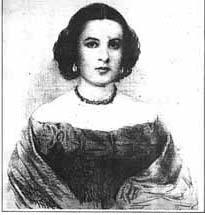
Úrsula Céspedes was born in Hacienda La Soledad, close to Bayamo in the eastern part of Cuba. Céspedes was a poet and the founder of the Academia Santa Úrsula in Manzanillo, Cuba.
Her education started at home where she learned music and French. Years later while visiting Villa Clara, a province in Cuba, she met her soon-to-be husband, Gines Escanaverino.
Shortly after, she became a teacher and founded the Academia Santa Úrsula for women’s schooling with her husband. The couple moved to Havana in 1863 where they remained until 1865 when her husband became a director for a secondary school, where the poet also taught classes.
Céspedes’ first poems were published in 1855 in Semanario Cubano and El Redactor in Santiago de Cuba. In 1861, she published her first book, Ecos de la Selva, with a prologue by Carlos Manuel de Céspedes.
After the death of her brothers and father, Céspedes moved to Santa Isabel de las Lajas due to the uncontrolled persecution against her family. She died there on November 2, 1874. In 1948 the Dirección de Cultura of the Ministry of Education published a selection of her works.
. . . . . . . . . .
Aurelia Castillo de González (1842 – 1920)
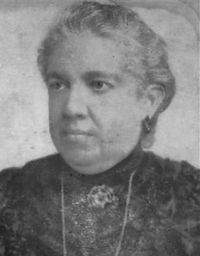
Aurelia Castillo de González was born in Camagüey, Cuba. She received a liberal arts education, which inspired her interest in literature.
She married Spanish soldier Colonel Francisco Gonzalez del Hoyo, whose support of the Republic earned him many enemies in Cuba. As a result, in 1875 the couple left Cuba for Spain.
There, Aurelia worked for various magazines to establish her writing career, focusing on anti-slavery issues.
She first attracted attention as a writer with her elegy on “El Lugareno” in 1866. She was also the author of a volume of fables based on the life and works of Gertrudis Gomez de Avellaneda. In addition, she founded the Academia de Artes y Letras (Academy of Arts and Letters).
After much travel, she returned to her hometown of Camagüey where she died in 1920.
. . . . . . . . . .
Lydia Cabrera (1899 – 1991)
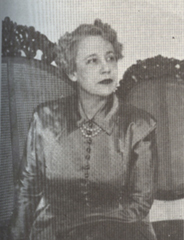
Lydia Cabrera, born in Havana, Cuba, was a writer as well as a literary activist, and ethnologist. She is known as a major figure in Cuban letters for her work in Afro-Cuban folklore and fictional works.
In 1927, Cabrera moved to France in hopes of becoming an artist. As a result of her studies in Paris and a friendship with Teresa de la Parra, a Venezuelan author whom she met while studying in Europe, she decided to study Afrocubanismo as an adult. The pair often studied Cuba and read Cuban books together.
In 1938, she returned to Cuba and remained there until 1960. After the Communist takeover by Fidel Castro, she relocated to Miami, Florida, where she lived and continued to work for the remainder of her life. Around the time of her death, she donated her research collection to the University of Miami.
Cabrera published over one hundred books, the most important being El Monte (The Wilderness), the first major ethnographic study of Afro-Cuban traditions, herbalism, and religion.
In addition, she was among the first writers to bring recognition to the rich Afro-Cuban culture and religion. She contributed greatly to Cuba’s literature, anthropology, art, ethnomusicology, and ethnology. Cabrera died in Miami, Florida, on September 19, 1991.
. . . . . . . . .
Ofelia Rodríguez Acosta (1902 – 1975)
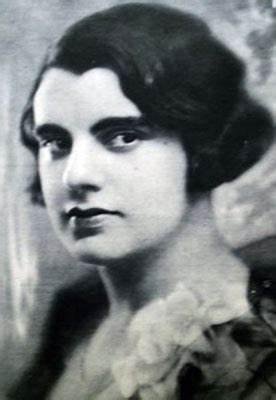
Ofelia de la Concepción Rodríguez Acosta García was a writer, journalist, activist, and radical feminist born in Pinar del Rio, Cuba. In addition to being an author feminist chronicles, stories, novels, and essays, she’s also considered one of Cuba’s most famous social reformers.
Writing and study were greatly valued in her childhood, as her father was a writer and intellectual. Rodríguez was a bright student at the Institute of Havana, and as a result of her hard work she was awarded a grant to study in Europe and Mexico.
Rodríguez was recognized as one of the most prolific writers of the 1920s and 1930s. She played an active role in Cuba’s politics as well. Between 1929 to 1932, she wrote for Bohemia, where she “developed radical psychological challenges to the prescribed behavior of Cuban women.”
Rodríguez, along with Cuban feminist, journalist, and poet Mariblance Sabas Aloma, was among one of Cuba’s most influential feminist writers of the early part of the twentieth century.
Some of Rodríguez’s work was quite controversial. La Vida Manda (1927), which caused public outrage, was perhaps the most controversial of all her works. She was quite adamant about women’s liberation from the religious, social, and sexual structures of society; she encouraged women to take control of their own liberation.
Rodríguez moved to Mexico in 1939 and lived there until her death on June 28, 1975. There has been speculation that she spent her last years in a Mexican lunatic asylum, while others report that she passed away in a nursing home in Havana. ??
. . . . . . . . . .
Dulce Maria Loynaz (1902 – 1997)
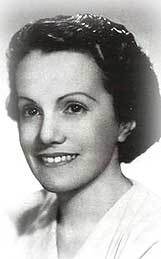
Dulce Maria Loynaz, known as the “grande dame of Cuban letters,” was born in Havana City, Cuba, into an artistic and patriotic family. She was the daughter of General Enrique del Castillo (author of the lyrics of the march theme “El Himno Invasor”) and the sister of poet Enrique Loynaz Munoz.
Loynaz’ young adulthood was filled with adventure, as she was able to enjoy experiences only accessible to the privileged. She published numerous poems in this phase of her life, and graduated with a Doctorate of Civil Law at the University of Havana in 1927. She never formally practiced law.
In 1928, Loynaz started writing the novel Jardin and completed it in 1935. Feminism was flourishing in Cuba, and women’s rights were making waves in politics.
Loynaz was elected as a member of the Arts and Literature National Academy in 1951, the Cuban Academy of Language in 1959, and the Spanish Royal Academy of Language in 1968. She received many prizes and awards from various Cuban cultural institutions. Perhaps the most notable awards was the Miguel de Cervantes Prize in 1984, considered the equivalent of the Nobel Prize in Spanish literature.
She voluntarily stopped writing in Cuba in 1959 after the victory of the Revolution. She continued to gain recognition for her works, however, and was awarded the Cuban National Prize for Literature in 1987. Dulce Maria Loynaz died in 1997 and was buried in the Colon Cemetery, Havana.
. . . . . . . . . .
Dora Alonso (1910 – 2001)
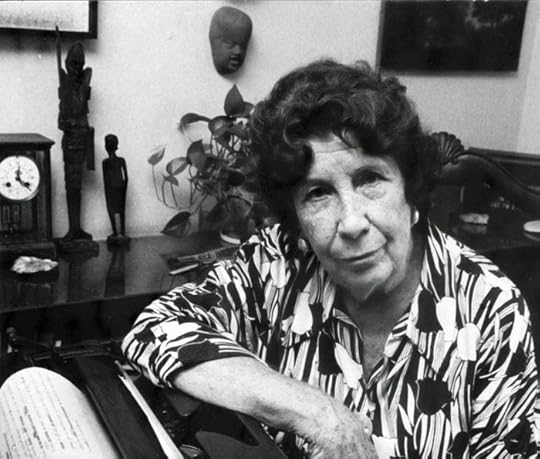
Born in Maximo Gomez, Matanzas, Cuba, Dora Alonso was a journalist and writer who worked in both print and radio. Her works range from novels, short stories, poetry, children’s literature, and theatre.
After her first poem, Amor, appeared in the El Mundo newspaper, she began taking on diverse writing jobs, such as becoming a correspondent of the newspaper Prensa Libre (Free Press) and writing radio scripts.
One of her first short stories on social issues was awarded in 1936 by Bohemia, a literary magazine. In 1942, she started writing for a magazine called Lux, which showcased her first interviews with many political and public figures. These included the Chinese ambassador in Cuba and Pablo Neruda, the Chilean poet.
Alonso is the most translated and published Cuban author for children. Two of her novels, Tierra Brava and Soy el Batey have been adapted to film by Instituto Cubano de Radio y Televisión. Another one of her novels, Tierra Inerme, was given the highest recognition at II Spanish American Literary Contest at Casa de las Americas.
Dora Alonso, one of the most prolific of Cuban writers, passed away at the age of ninety on March 21, 2001.
. . . . . . . . . .
Rafaela Chacón Nardi (1926 – 2001)
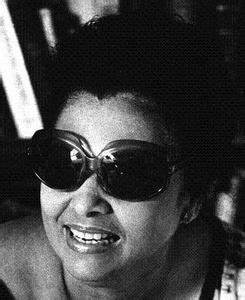
Rafaela Chacón Nardi was a Cuban poet and educator born in Havana, Cuba.
After studying to become a teacher, she became a professor and taught at Escuela Normal para Maestros, Universidad de La Habana, and Universidad Las Villas. In 1948 she published Journey to the Dream, her first volume of poetry. The work was reprinted in 1957 and included a letter that Chilean poet Gabriela Mistral wrote praising Nardi’s poetry.
In 1971, Nardi founded the Grupo de Expresión Creadora as she had an interest in design and development of educational activities for disabled children.
She also facilitated children’s workshops in order to teach them about the work of José Martí and directed the Clubes de Promocion a la Lectura (Reading Promotion Clubs) for blind children. As a result of her dedication and hard work, she was awarded the Alejo Carpentier medal. Nardi died on March 11, 2001, in Havana, Cuba.
. . . . . . . . . .
Julieta Campos (1932 – 2007)

Julieta Campos was a Cuban-Mexican writer born in Havana, Cuba.
she was awarded the Premio Xavier Villaurrutia for her novel, Tiene Los Cabellos Rojizos y Se Llama Sabrina (1974). Four years after receiving the award for her outstanding work, she became the director for the Mexican chapter of the writer’s organization, PEN.
In addition to her literary endeavors, Campos served in López Obrador’s cabinet as the local Secretary of Tourism during the administration of Andrés Manuel López Obrador as Head of Government of the Federal District.
Campos died of cancer at the age of 75 in Mexico City on September 5, 2007.
. . . . . . . . . .
Excilia Saldaña (1946 – 1999)
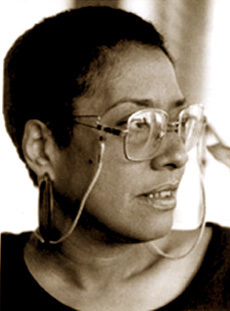
Excilia Saldaña Molina was an Afro-Cuban juvenile literature writer, academic, and poet born in Havana, Cuba.
After graduating from Pedagogical Institute in Havana, she became a high school teacher. She also became one of the cultural figures who established El Caimán Barbudo (The Bearded Cayman) in 1966.
In 1967, she received an honorable mention from the jury of the Casa de las Americas Prize for her first book of poetry, Enlloro’, an unpublished manuscript. After leaving her teaching job in 1971, Saldaña became an editor at Editorial Casa de las Américas.
Saldaña was a professor of children’s literature at the Felize Varela Teaching Institute as well as at other universities. Her writing style incorporated elements of folklore and cultural traditions, as well as the exploration of women’s roles. Her work sheds light on issues of abandonment, incest, and sexual violence that Caribbean women face.
Saldaña was the recipient of numerous awards, including the 1979 National Ismaelillo Prize and the Rosa Blanca Prize (which she won three years in a row) from the National Union of Writers and Artists of Cuba (UNEAC). Years later, UNEAC honored her again with the Nicolás Guilén Award for poetry.
Due to complications related to asthma, Saldaña died on July 20, 1999 in Havana.
More Cuban women authors worth a mention
Brígida Agüero y Agüero (1837 – 1866)
Mirta Aguirre (1912 – 1980)
Juana Borrero (1877 – 1896)
Domitila García Doménico de Coronado (1847 – 1938)
Maria Cristina Fragas (1856 – 1936)
Gilda Antonia Guillen (1959 – 2006)
Ada Maria Isasi-Diaz (1943 – 2012)
María Dámasa Jova Baró (1890 – 1940)
More about Cuban women authors
In Focus: “Cuban Art and Identity 1900-1950”
Women poets of Cuba: a selection of poems translated by Margaret Randall
. . . . . . . . . .
Skyler Isabella Gomez is a 2019 SUNY New Paltz graduate with a degree in Public Relations and a minor in Black Studies. Her passions include connecting more with her Latin roots by researching and writing about legendary Latina authors.
The post 10 Classic Cuban Women Authors to Discover appeared first on Literary Ladies Guide.
A New Orleans Author in Mark Twain’s Court : Letters from Grace King’s New England Sojourns
Grace King’s life (1852 – 1932) spanned two wars, various epidemics, disruptive politics, and fluctuating economics. Her literary career began in 1885 when two northern editors came to New Orleans to write up the south and find local writers at the World’s Industrial and Cotton Centennial Exposition.
Richard Watson Gilder of Century Magazine challenged King to write her first short story, and Charles Dudley Warner placed it and then mentored her into the publishing world.
Over almost five decades, King wrote short stories and novellas, biographies and histories, genealogy, and a memoir. Her path reflected the shifting changes in taste. As with other women writers whose works disappeared from the literary canon, she is again receiving attention for her sensitivity and knowledge of a particular time and place.
Her subjects were post-reconstruction New Orleanians, especially women, forced to reinvent themselves after a great loss for which they were ill prepared.
King’s father had been a successful attorney; she and six siblings were well educated in French Creole schools. At an impressionable ten years old when Union troops captured New Orleans, she and her family left the city until after the Civil War.
She never fully recovered from having expected a genteel life but inheriting a struggling one, especially after her father’s death in 1881. She and two sisters and a brother remained unmarried until their deaths.
Her determination to regain family status drove her literary career and genre choices. As a historian, researcher, genealogist, and independent businessperson, she was a woman before her time. As a writer of sensuous, ironic, and illuminating fiction, she fashioned stories that can reward readers who seek them out.
. . . . . . . . . . .
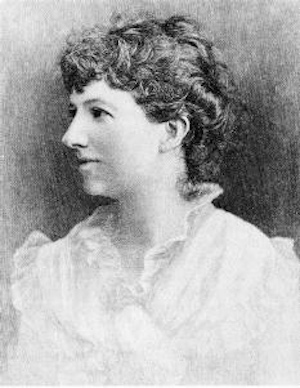 Grace King in 1887
Grace King in 1887
. . . . . . . . . . .
A New Orleans Author in Mark Twain’s Court
In A New Orleans Author in Mark Twain’s Court (LSU Press, November 2019), Grace King’s life is illuminated through her letters. Edited by Miki Pfeffer, A New Orleans Author in Mark Twain’s Court paints a fascinating picture of the northern literary personalities who caused King’s budding career to blossom.
Shortly after Grace King wrote her first stories in post-Reconstruction New Orleans, she entered a world of famous figures and literary giants greater than she could ever have imagined. Notable writers and publishers of the Northeast bolstered her career, and she began a decades-long friendship with Mark Twain and his family that was as unlikely as it was remarkable.
Beginning in 1887, King paid long visits to the homes of friends and associates in New England and benefited from their extended circles. She interacted with her mentor, Charles Dudley Warner; writers Harriet Beecher Stowe and William Dean Howells; painter Frederic E. Church; suffragist Isabella Beecher Hooker; Chaucer scholar Thomas Lounsbury; impresario Augustin Daly; actor Will Gillette; cleric Joseph Twichell; and other stars of the era.
As compelling as a novel, this audacious story of King’s northern ties unfolds in eloquent letters. They hint at the fictional themes that would end up in her own art; they trace her development from literary novice to sophisticated businesswoman who leverages her own independence and success.
Through excerpts from scores of new transcriptions, as well as contextualizing narrative and annotations, Miki Pfeffer weaves a cultural tapestry that includes King’s volatile southern family as it struggles to reclaim antebellum status and a Gilded Age northern community that ignores inevitable change.
King’s correspondence with the Clemens family reveals incomparable affection. As a regular guest in their household, she quickly distinguished “Mark,” the rowdy public persona, from “Mr. Clemens,” the loving husband of Livy and father of Susy, Clara, and Jean, all of whom King came to know intimately.
Their unguarded, casual revelations of heartbreaks and joys tell something more than the usual Twain lore, and they bring King into sharper focus. All of their existing letters are gathered here, many published for the first time.
Miki Pfeffer is a visiting scholar at Nicholls State University and the author of the award-winning Southern Ladies and Suffragists: Julia Ward Howe and Women’s Rights at the 1884 New Orleans World’s Fair.
. . . . . . . . . .
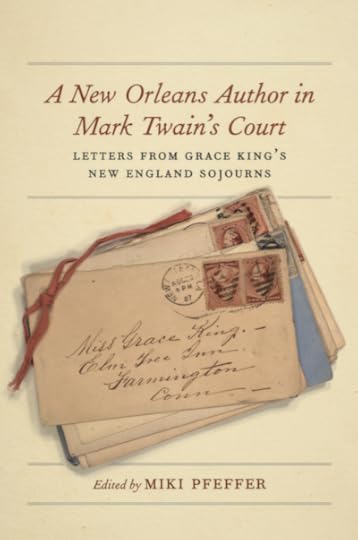
A New Orleans Author in Mark Twain’s Court on Amazon*
. . . . . . . . . .
From the prologue of A New Orleans Author in Mark Twain’s Court
At the age of thirty-three, Grace King had little reason to expect to begin a literary career or to be welcomed into a circle of famous writers and respected publishers. In 1885, she was simply a disgruntled eldest sister with an urge for freedom but few prospects to achieve it, a relative drudge who spent her energies managing the house for an eccentric family and yearning to escape their incessant rebellions.
The center of the seven Kings was their mother, Mimi, whom Grace publicly called “a charming raconteuse, witty, and inexhaustible in speech” who “turned every episode of her life into a good and colorful story” but privately termed her “an ambitious woman, determined to surpass every one, & succeeding.”
Grace most often bemoaned her life en famille in uninhibited letters to her intime May, the only sister who escaped the erratic household when she married in early 1884 and moved to North Carolina. She labeled older brothers Fred and Branch unsympathetic, demanding, and disagreeable; and unmarried sisters Nan and Nina, lackadaisical and argumentative, “like unreliable watches, always running down or stopping and never giving the correct time of day.”
Nan she pictured as “utterly ignoring any social or domestic duties,” and Nina as “lying in bed with malaria — half the day — doing fancy work the other half.” Lastly, she saw her youngest brother, Will, as unrealistic and grandiose rather than responsible and contributing.
Exacerbating the turmoil, money was always scarce and penny-pinching was commonplace as the older brothers tried to provide for the genteel family, as expected (their father had died in 1881). Grace craved a life apart.
More about Grace King
Selected works
Monsieur Motte (1888)
Tales of a Time and Place (1892)
Balcony Stories (1893)
New Orleans: The Place and the People (1895)
Stories from Louisiana History (1905)
The Pleasant Ways of St. Médard (1916)
La Dame de Sainte Hermine (1924)
Memories of a Southern Woman of Letters (1932)
More information
Wikipedia
Grace King on Librivox
Reader discussion of King’s works on Goodreads
. . . . . . . . . . .
*This is an Amazon Affiliate link. If the product is purchased by linking through, Literary Ladies Guide receives a modest commission, which helps maintain our site and helps it to continue growing!
The post A New Orleans Author in Mark Twain’s Court : Letters from Grace King’s New England Sojourns appeared first on Literary Ladies Guide.
March 24, 2020
Elizabeth Bowen
Elizabeth Bowen (June 7, 1899 – February 22, 1973) was an Irish-British novelist and short-story writer best known for fictional works that focused on life in wartime London and relationships among the upper-middle class.
Some have referred to her as the “grande dame” of the modern novel, her work characterized by a conscious, concise style.
Bowen’s work reflects her great interest in “life with the lid on and what happens when the lid comes off.” It examines the innocence of orderly life and irrepressible forces that transforms one’s experience. In her stories and novels, she examines the betrayal and secrets beneath the veneer of respectability.
. . . . . . . . . .
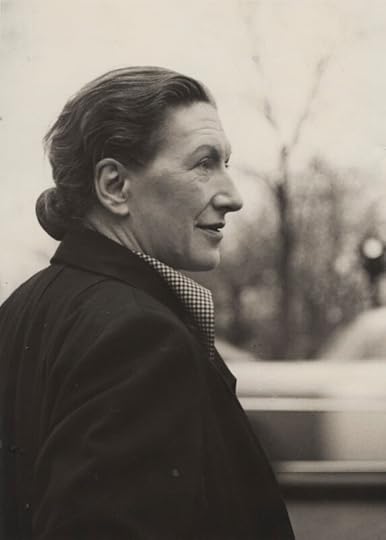
. . . . . . . . . .
Early life and education
Elizabeth Dorothea Cole Bowen was born at 15 Herbert Place in Dublin to Florence Bowen and Henry Charles Cole Bowen. She was baptized in the nearby St. Stephen’s Church on Upper Mount Street and spent summers as a young girl at Bowen’s Court, a historic country house near Kildorrery, County Cork.
She lived in Ireland until the age of seven. After her father’s mental illness became acute in 1907, she and her mother relocated Hythe in England.
After her mother passed away in 1912, Bowen’s aunts became her guardians. They sent her to Downe House School, a selective girl’s boarding school, to receive an education. After attending art school in London, she decided to focus her attention on writing.
Bowen became associated with the Bloomsbury Group. She developed a good friendship with English writer Rose Macaulay, who assisted her in finding a publisher for her first book, Encounters (1923), a collection of short stories.
. . . . . . . . . .
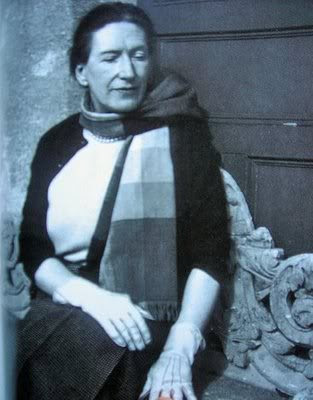
. . . . . . . . . .
Love and literature
The same year that Bowen published Encounters (1923) she married Alan Cameron, an educational administrator. Their marriage was never consummated and was described as a “sexless but contented union.”
Although she was with Cameron, she had numerous relationships outside of her marriage. She was in a relationship with Charles Ritchie, a Canadian diplomat seven years her junior, for over thirty years. In addition, she had an affair with Irish writer Seán Ó Faoláin and American poet May Sarton.
Bowen and Cameron lived near Oxford where she regularly socialized with English scholar Maurice Bowra, Scottish novelist John Buchan, and British writer Susan Buchan.
The Last September (1929), one of her most notable works, discussed life in Danielstown, Cork at the time of the Irish War of Independence.
After the publication To the North (1932) was her next novel, Bowen and her husband moved to the Regent’s Park section of London. Here, she wrote The House in Paris (1935) and The Death of the Heart (1938). Between publishing these works, she became a member of the Irish Academy of Letters.
. . . . . . . . . .
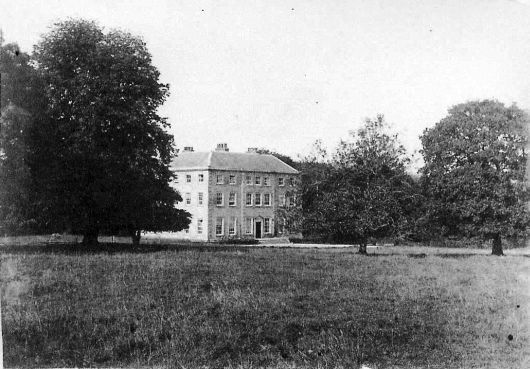
Bowen’s Court
. . . . . . . . . .
Dealing with success
In 1930, Bowen inherited Bowen’s Court, becoming the first and only woman to do so. In the 1930s and onwards, Bowen had numerous notable visitors come to her home, including Virginia Woolf, Iris Murdoch, and Eudora Welty. On the eve of World War II, she began working for the British Ministry of Information in 1939 and reported on issues of neutrality and Irish opinion.
Bowen’s political views leaned towards Burkean conservatism during the wartime. During and after the war, Bowen arguably wrote one of the greatest expressions of what life was like in wartime London with novels such as The Demon Lover and Other Stories (1945).
For her contribution to literature, she was awarded the CBE (The Most Excellent Order of the British Empire) in 1948.
In 1952, her husband retired and the couple settled in Bowen’s Court. He passed away a just a few months later. After his death, Bowen found it difficult to keep up with her household as she was constantly traveling to the United States to earn money by lecturing.
In 1958, Bowen traveled to Italy to research and prepare for her 1960 novel, A Time in Rome. A year later, she was forced to sell Bowen’s Court. After she sold her beloved home, it was demolished. Bowen spent the next few years without a stable home before she settled in Carbery, Church Hill, Hythe, in 1965.
. . . . . . . . . .
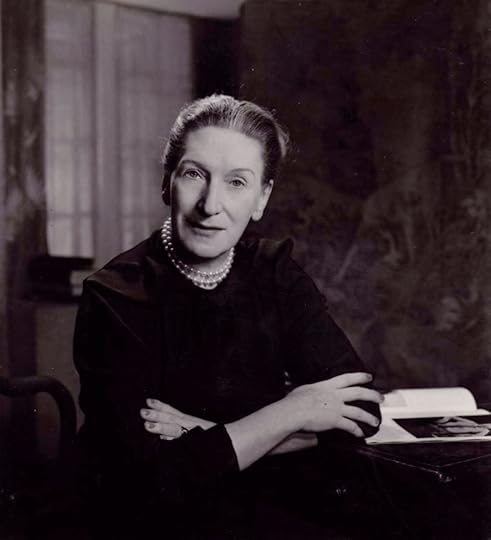
. . . . . . . . . .
Themes in Bowen’s work
Bowen explained that she preferred to write in the mornings when she was “cold, energetic, candid, and rational” as opposed to the evenings when her brain worked “fast but feverishly and with poorer quality.”
When she was working on a novel, she kept “office hours” strictly to standard business hours. She was slow and deliberate in her writing, and as a result, her novels were on the shorter side.
She highly admired the medium of film, and was influenced by filmmaking techniques that were popular in her time. Her most famous novel, The Heat of the Day (1948), is considered the best representation of London during the bombing raids of World War II.
In addition to her highly respected works on the realities of life, Bowen is also noted for her ghost stories. Robert Aickman, a supernatural fiction writer, describes Elizabeth Bowen as “the most distinguished living practitioner” of ghost stories.
. . . . . . . . . .
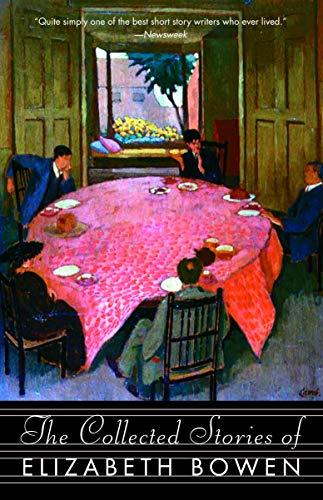
Elizabeth Bowen page on Amazon*
. . . . . . . . . .
Awards and honors; the legacy of Elizabeth Bowen
Elizabeth Bowen was awarded the James Tait Black Memorial Prize for her final novel, Eva Trout, or Changing Scenes (1968). In 1970, she was shortlisted for the Booker Prize for her work on Eva Trout (1968), her final novel about a young woman raised by her millionaire father.
In 1977, the first biography of Elizabeth Bowen was published by Victoria Glendinning. In 2009, Glendinning published a book focusing on the relationship between Charles Ritchie and Bowen based on letters and diaries.
In 2012, English Heritage marked Bowen’s Regent’s Park home at Clarence Terrace with a blue plaque. The plaque was unveiled on October 19, 2014 in commemoration of her residence at the Coach House, The Croft, Headington from 1925-1935.
Four of Bowen’s novels were adapted for British television of films: The Last September, The Death of the Heart, The Heat of the Day, and The House in Paris.
In a 2005 review of Elizabeth Bowen: The Enforced Return by Neil Corcoran, Stacey D’Erasmo summed up this writer’s legacy, noting that she was often compared to Virginia Wolfe and Henry James:
“Elizabeth Bowen is a great writer. To this sentence is usually appended a phrase like: ‘though widely underappreciated’ or ‘though not much read’ or ‘of the Anglo-Irish experience between the wars.’ These are the sorts of phrases that give the impression that Bowen must be read through a special instrument, such as a telescope.
In fact, the opposite is true. Bowen, the author of some twenty-eight books, who lived from 1899 to 1973, had a genius for conveying the reader straight into the most powerful and complex regions of the heart.
On that terrain, she was bold, empathic and merciless. She wrote about the aftermath of wars, about affairs and about childhood with equally piercing insight and a thorough comprehension of the consequences of politics and desire.”
. . . . . . . . . .
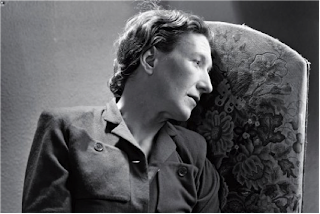
. . . . . . . . . .
Final years
In 1972, Bowen spent Christmas with her friends in Kinsale, County Cork. Soon after returning home, she was hospitalized. She had developed lung cancer, and passed away in University College Hospital on February 22, 1973 at the age of seventy-three.
Elizabeth Bowen was buried alongside her husband in Farahy, County Cork churchyard, near Bowen’s Court’s gates. A commemoration of her life is celebrated annually at the entrance to St. Colman’s Church.
. . . . . . . . . .
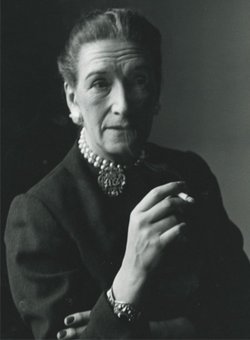
More on Elizabeth Bowen
Major works (short stories)
Encounters (1923)
Ann Lee’s and Other Stories (1926)
Joining Charles and Other Stories (1929)
The Cat Jumps and Other Stories (1934)
Look At All Those Roses (1941)
The Demon Lover and Other Stories (1945)
Ivy Gripped the Steps and Other Stories (1946)
Stories by Elizabeth Bowen (1959)
A Day in the Dark and Other Stories (1965)
The Good Tiger (1965)
Elizabeth Bowen’s Irish Stories (1978)
The Collected Stories of Elizabeth Bowen (1980)
Novels
The Hotel (1927)
The Last September (1929)
Friends and Relations (1931)
To the North (1932)
The House in Paris (1935)
The Death of the Heart (1938)
The Heat of the Day (1949)
A World of Love (1955)
The Little Girls (1964)
Eva Trout (1968)
Biographies and critical studies
Elizabeth Bowen: A Biography by Victoria Glendinning (2006)
Love’s Civil War: Elizabeth Bowen and Charles Ritchie – Letters and Diaries 1941-1973, ed. by Victoria Glendinning with Judith Robertson (2009)
Elizabeth Bowen: A Literary Life by Patricia Laurence (2019)
In addition, there are numerous critical studies and critical essays on Bowen’s works.
More information and sources
Britannica
Oxford Bibliographies
Encyclopedia
Reader discussion of Bowen’s works on Goodreads
Collected Stories by Elizabeth Bowen — Ghosts, Comedy, and a Touch of Spark
Elizabeth Bowen archive at the Harry Ransome Center
Skyler Isabella Gomez is a 2019 SUNY New Paltz graduate with a degree in Public Relations and a minor in Black Studies. Her passions include connecting more with her Latin roots by researching and writing about legendary Latina authors.
. . . . . . . . .
*This is an Amazon Affiliate link. If the product is purchased by linking through, Literary Ladies Guide receives a modest commission, which helps maintain our site and helps it to continue growing!
The post Elizabeth Bowen appeared first on Literary Ladies Guide.
Pollyanna by Eleanor H. Porter: Revisiting the Eternal Optimist
Most everyone knows what defines a “Pollyanna” — someone who looks at the bright side of things no matter how dire, or who paints an overly optimistic picture of any situation. The 1913 novel Pollyanna by Eleanor H. Porter is perhaps less familiar now than the lasting expression that grew from its sentimental story.
Pollyanna, subtitled “The glad book,” was incredibly successful from the start, and inspired many adaptations in other media. Though intended as a children’s novel, it appealed to all ages.
Eleven-year-old Pollyanna Whittier, one of a legion of literary orphans, is sent to live with her aunt Polly, an icy spinster. This follows on the trope of another ebullient orphan of that era, Anne Shirley, better known as Anne of Green Gables (1908), who melts the heart of the stereotypical spinster who adopts her.
Introducing the “glad game”
Pollyanna and her departed father had devised a “glad game,” wherein they would try to find the silver lining in any situation, no matter how dire. So when Pollyanna got a pair of crutches for Christmas instead of the doll she longed for, she decided to be glad that she didn’t need the crutches.
Once she is living with her stern aunt, she is punished for being late for dinner and is relegated to eating bread and milk in the kitchen with the servant. No problem for her — she determines to enjoy the bread and milk and to like the servant.
In this essay, Jurrian Kamp muses on Pollyanna’s approach to life:
“The glad game shields her from her aunt’s stern attitude: when Aunt Polly puts her in an ugly attic room with no pictures, rugs or mirrors, she is glad for it.
If she had a nice bedroom, she probably wouldn’t notice the beautiful trees outside her window. Had her aunt given her a mirror, she would have to look at her freckles.”
Soon, Pollyanna is spreading her glad game to the resident of the dour Vermont town in which she now lives, transforming it into a joyous place to live.
. . . . . . . . .

. . . . . . . . .
A comforting message on the eve of a world war
Sentimental, and occasional corny as the book can be, its comforting, positive message evidently resonated as the rumblings of World War I were being heard.
Indeed, the book was an instant bestseller. Newspapers reported that soon after its publication that the book sold more than 150,000 copies, and that the author, “Mrs. Eleanor H. Porter of Cambridge, Mass., is being overwhelmed with letters of appreciation and gratitude.”
Building on the enthusiasm for the original, Pollyanna Grows Up was published in 1915.
There are limits to optimism
More than a century after its publication, I still see this expression crop up surprisingly often, and it’s never a compliment. “Such a Pollyanna” is a critical response to someone who is unrealistically optimistic.
Jurrian Kamp argues that there are limits to optimism and that even Pollyanna, in the end, learned not to be so completely a blind optimist:
“Eventually, however, even Pollyanna’s robust optimism is put to the test when she is hit by a car and her legs become paralyzed. Her response, for once, seems realistic.
She is grief-stricken and recognizes that it is easier to tell others to feel good about their plight than to tell oneself the same thing. She admits that the game is not fun if it is really hard to play.
Still, she is determined to find a reason to feel good about her plight. She decides she is glad that she cannot walk because her accident has caused her stern aunt to soften up.
The novel ends happily: the aunt marries her former lover and Pollyanna is sent to a hospital where she learns to walk again, able to appreciate the use of her legs far more as a result of being temporarily disabled.”
. . . . . . . . . .
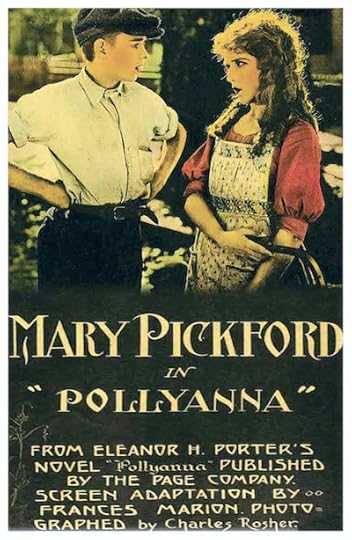
Poster for the first film adaptation of Pollyanna (1920)
. . . . . . . . . .
Sequels and adaptations
Pollyanna’s success led to a sequel, Pollyanna Grows Up, published in 1915. Pollyanna books became a kind of early franchise, with a number of sequels written by authors other than Porter. One even came out as late as 1997: Pollyanna Plays the Game by Colleen L. Reece.
Pollyanna was adapted first for the stage as a comedy called Pollyanna: The Glad Girl. Met with critical and commercial success upon its Philadelphia debut, it toured the U.S. through 1819.
The first film adaptation appeared in 1920 with Mary Pickford in the title role, her first in a storied silent film career. The film, like the play and the book before it, was a smash success.
The 1960 Disney adaptation is the best known. Hayley Mills won a special Oscar for her portrayal of Pollyanna. The film departs in some significant ways from the book; still, it was a major success.
In 1973, the BBC aired the story as a six-part series. In 1989, Disney produced a made-for-television musical version with an African-American cast. In 2018, Brazilian telenovela presented a Spanish language version titled Poliana.
And this is just a partial listing of adaptations. Apparently, something about Pollyanna resonates. Perhaps it appeals to our better natures, the part of us that wants to stay optimistic even in the face of dire situations and the everyday challenges of life.
. . . . . . . . . .

The 1960 film adaptation starring Hayley Mills
. . . . . . . . .
How the Pollyanna begins: A synopsis from serialization
Pollyanna was so popular that many newspapers serialized it the year after it appeared. The Baltimore Sun, April 30, 1914, introduced the first installment as follows:
Miss Polly Harrington, a wealthy spinster of forty has led a lonely life for many years in her house in Beldingville, Vermont. She receives the unwelcome news that, by the death of Reverend John Wittier, a poor home missionary and the widower of her late sister, his only child, Pollyanna, has been left an orphan.
Much as she dislikes the idea, Miss Polly considers it her duty to care for her niece. After she has swept the bare little attic room which has been earmarked for Pollyanna, the maid Nancy is sent to meet the small stranger, much to her chagrin.
Miss Polly, now Aunt Polly, receives the impulsive greeting of Pollyanna with icy coldness and the child is moved to tears when she sees the forlorn, hot little room where she must live.
But she meets the situation bravely, telling Nancy about the “glad game” she used to play with her father. It was a game that taught her to find something to be glad about in any trouble no matter how hard to bear.
There are no screens in Pollyanna’s attic room windows, so Aunt Polly won’t allow her to open them for fear of flies. And so, the little girl, who can’t sleep in the stifling heat, tiptoes about and makes her bed on the roof for the night.
Aunt Polly hears the unfamiliar sounds, and calls for Tom and Timothy, the servants, thinking there is a burglar on the roof. She is enraged when the “burglar” proves to bePollyanna, and as a punishment, condemns her niece to spend the rest of the night with her in her bed.
But Pollyanna’s glad game turns the punishment into a reward to the amazement and indignation of her aunt.
During her walks about the town, Pollyanna often meets “The Man.” He looks so lonely that she ventures to speak to him on several occasions and tells him her name. But this only seems to increase his confusion, and he turns and walks away in haste.
With an offering of jelly, Pollyanna is sent to the house of an invalid whose chief business in life is complaining. The little girl wins the cross woman over by combing her curly black hair in a fascinating fashion and persuading her to look at her pretty face for the first time in years.
Pollyanna tries the glad game on the invalid and undertakes to discover for her what there is to be glad about in spending all the long days flat on her back in bed.
. . . . . . . . .
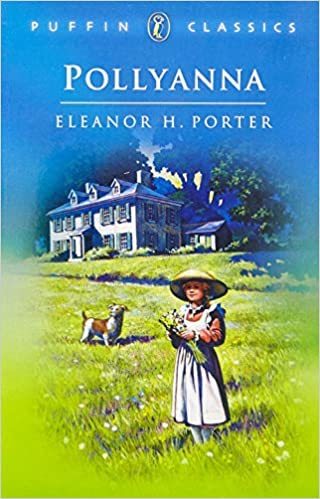
Pollyanna by Eleanor H. Porter on Amazon*
. . . . . . . . . . .
The author has the last word
In A 2013 essay in The Atlantic marking the book’s centenary, Ruth Graham wrote:
“Pollyanna’s ‘glad game’ goes beyond simple positive thinking. Pollyanna isn’t always cheerful; she cries over disappointments large and small, and initially refuses to play the game when she suffers a major tragedy. It’s not that she’s naturally the world’s greatest optimist; rather, optimism is a tool she uses to make herself happy.
Her gladness is Gladwellian: It’s not a state of mind, but rather a skill that becomes stronger with practice. As the freckled little guru herself put it, ‘When you’re hunting for the glad things, you sort of forget the other kind.’ Welcome to the 21st century, Pollyanna. You’ll fit right in.”
Despite the book’s incredible success and staying power, Eleanor H. Porter was often roundly criticized for unleashing this cheerful-to-a-fault heroine. In an interview, she explained:
“You know I have been made to suffer from the Pollyanna books. I have been placed often in a false light. People have thought that Pollyanna chirped that she was ‘glad’ at everything. I have never believed that we ought to deny discomfort and pain and evil; I have merely thought that it is far better to ‘greet the unknown with a cheer.'”
More about Pollyanna by Eleanor H. Porter
Wikipedia
Reader discussion on Goodreads
Pollyanna – 1960 film
Read Pollyanna online at Project Gutenberg
Listen to Pollyanna on Librivox
. . . . . . . . . .
*This is an Amazon Affiliate link. If the product is purchased by linking through, Literary Ladies Guide receives a modest commission, which helps maintain our site and helps it to continue growing!
The post Pollyanna by Eleanor H. Porter: Revisiting the Eternal Optimist appeared first on Literary Ladies Guide.
March 19, 2020
Marianne Moore
Marianne Moore (November 15, 1887 – February 5, 1972) was a poet who belonged to the American Modernist movement. Her poetry was notable for its wit, irony, and use of syllabic verse. She was also a respected translator.
At right, a 1957 photo of Marianne Moore by the noted photographer Imogen Cunningham.
Politically, Marianne was heavily involved in the women’s suffrage movement in the United States, often supporting the movement anonymously through her writing. She was viewed as a celebrity throughout much of her life, and she received numerous honorary degrees and awards for her works, including the Pulitzer Prize and the National Medal for Literature.
Early life
Marianne was born in Kirkwood, Missouri, on November 15, 1887. Her mother and father separated before she was born, and she was raised by her mother, Mary Moore. She lived with her mother and her brother in St. Louis until the age of 16, and her grandfather, a Presbyterian minister, was a highly influential figure in her life.
After her grandfather’s death in 1894, Marianne and her family lived with relatives. In 1896, Marianne moved with her mother and brother to Pennsylvania, where her mother worked as an English teacher at a private school.
. . . . . . . . . . .
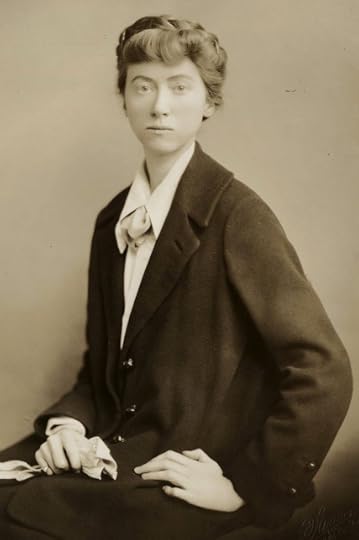 . . . . . . . . . . .
. . . . . . . . . . .
College education and beyond
In 1905, Marianne enrolled at Bryn Mawr College, majoring in history, political science, and economics. Hilda Doolittle (“H.D.”), another future poet, was Marianne’s classmate during her freshman year.
As a student, Marianne began writing short stories for the college literary magazine, and this experience inspired her to become a professional writer. Ms. Moore graduated from Bryn Mawr College with her bachelor’s degree in 1909, and she then studied typing at Carlisle Commercial College.
From 1911 through 1915, Moore worked as a teacher at Carlisle Indian School. She moved with her mother to New York City in 1918 and became an assistant at the New York Public Library in 1921.
She was introduced to many poets, including Wallace Stevens and William Carlos Williams, and began to write for the Dial, a literary magazine. From 1925 to 1929, Marianne served as acting editor of the magazine.
Early publications
Marianne’s poetry was first published in spring 1915 in The Egoist and Poetry magazines. Poetry, her first book of poems, was published in 1921 by her former classmate, Hilda Doolittle, without Marianne’s knowledge. Observations, her second book of poetry, was published in 1924 and won the Dial Award that same year.
“The Octopus,” an exploration of Mt. Rainier that is now regarded as one of Marianne’s finest poems, was included in that publication. The volume also included “Marriage,” a poem written in free verse that featured quotations.
. . . . . . . . . . .
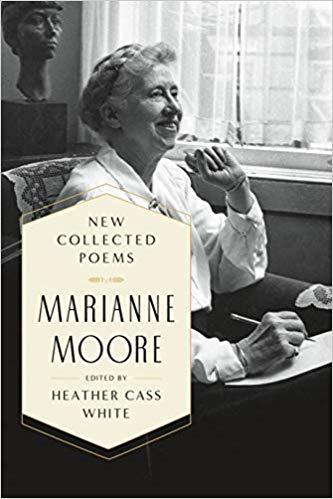
Marianne Moore page on Amazon*
. . . . . . . . .
Major works and awards
The 1930s and 40s were to be Marianne’s most productive years. Her next book of poems, Selected Poems, was published in 1935. It included poems that had been published in Observations and other poems that were published from 1932 to 1934. This was followed in 1941 after a gap of a few years by The Pangolin and Other Verse in 1936 and What Are Years?
Her subsequent work, Nevertheless, was published in 1944 and included an anti-war poem entitled “In Distrust of Merits.” W.H. Auden remarked that the poem was one of the best pieces of poetry from the World War II period.
Collected Poems was published in 1951, and won the Pulitzer Prize and the National Book Award. In 1953, Marianne also won the Bollingen Prize. Other works from the 1950s and 60s include Like a Bulwark (1956), O to Be a Dragon (1959), and Tell Me, Tell Me: Granite, Steel, and Other Topics (1966).
Poetic style and revision
For Marianne Moore, heartfelt and precise expression was the most important aspect of the written word. Most of her poems were written in syllabic verse.
She used stanzas that had a predetermined number of syllables to structure her poetry, and she enjoyed borrowing fragments and quotations from other writers in her works. About her own work, she commented “I tend to write in a patterned arrangement, with rhymes … to secure an effect of flowing continuity … there is a great amount of poetry in unconscious/fastidiousness.”
She had a special fondness for animals, and her poems frequently featured imagery from nature. Her friend William Carlos Williams once described her early works as evoking “the vastness of the particular.” He stated that when Marianne wrote even of a seemingly small object, the reader could feel “the swirl of great events.”
The Achievement of Marianne Moore: A Biography by Eugene P. Sheehy and Kenneth A. Lohf describes her work:
“Her line is long, gathering in its wake a host of observed detail and sharply drawn images, which she leaves to stir their own unaided ripples in the reader’s imagination. Her mood is at once elegant and ironic, conversational yet restrained, the starting point of her mediations often being rare or fabulous animals.”
In her later years, Marianne revised many of her earlier poems. In The Complete Poems of Marianne Moore (1967), she reduced “Poetry,” one of her most highly regarded poems, from its original thirty-one lines to just three lines. Although her revisions generated significant controversy, she maintained that the omissions were not accidental.
. . . . . . . . .
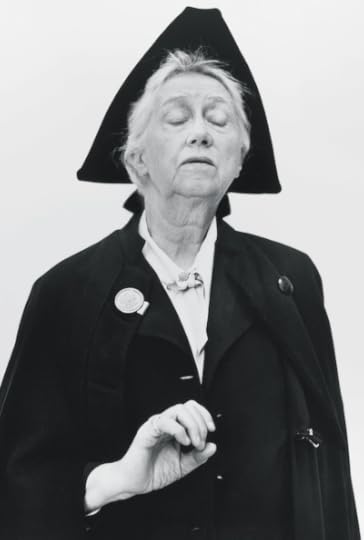
. . . . . . . . .
The legacy of Marianne Moore
After a series of strokes in her later life, Marianne passed away in New York City on February 5, 1972. She established a fund in her will to protect the Camperdown Elm tree in Prospect Park in New York City; she had previously written a poem about that particular tree.
After her death, Marianne was inducted into the St. Louis Walk of Fame in 1996. She was inducted into the New York State Writers Hall of Fame in 2012. The Rosenbach Museum and Library in Philadelphia preserved her living room in its original layout, and visitors today can view her entire library, including poetry drafts, photos, letters, and a baseball signed by Mickey Mantle.
More about Marianne Moore
On this site
12 Poems by Marianne Moore, Influential Modernist Poet
“Marriage” — A Modernist Poem by Marianne Moore (1923)
Selected works (poetry)
Poems, 1921
Observations, 1924
Selected Poems, 1935
The Pangolin and Other Verse, 1936
What Are Years, 1941
Nevertheless, 1944
A Face, 1949
Collected Poems, 1951
Like a Bulwark, 1956
Idiosyncrasy and Technique, 1958
O to Be a Dragon, 1959
Dress and Kindred Subjects (1965)
Tell Me, Tell Me: Granite, Steel and Other Topics (1966)
The Complete Poems of Marianne Moore (1967)
The Accented Syllable (1969)
The Complete Poems (1982)
Complete Poems (1994)
Becoming Marianne Moore: The Early Poems, 1907 –1 924 (2002)
Poems of Marianne Moore, ed by Grace Schulman (2003)
Selected Works (prose)
The Complete Prose of Marianne Moore (1986)
A Marianne Moore Reader (1961)
Predilections: Literary Essays (1955)
Biographies, letters, and literary criticism
The Achievement of Marianne Moore: A Biography by Eugene P. Sheehy and Kenneth A. Lohf
Marianne Moore: A Collection of Critical Essays, ed. by Charles Tomlinson (1969)
Marianne Moore, Subversive Modernist by Taffy Martin (1986)
The Poetry of Marianne Moore: A Study in Voice and Value by Margaret Holley (1987)
Marianne Moore: A Literary Life by Charles Molesworth (1990)
Marianne Moore: The Art of a Modernist, ed. by Joseph Parisi (1990)
Marianne Moore: Questions of Authority by Cristanne Miller (1995)
The Selected Letters of Marianne Moore (1997)
More information and sources
Poem Hunter
Poetry Foundation
Poets.org
Wikipedia
Reader discussion on Goodreads
. . . . . . . . . .
*This is an Amazon Affiliate link. If the product is purchased by linking through, Literary Ladies Guide receives a modest commission, which helps maintain our site and helps it to continue growing!
The post Marianne Moore appeared first on Literary Ladies Guide.
March 18, 2020
10 Celebrated Poems by Maya Angelou
Maya Angelou (1928 – 2014) was a multitalented American author, actress, screenwriter, and civil rights activist. She was also a prolific poet, publishing collections throughout her writing career. This selection of 10 celebrated poems by Maya Angelou is a sampling spanning nearly three decades of her prolific output.
Angelou is perhaps best known for her 1969 memoir, I Know Why the Caged Bird Sings. It made literary history as the first nonfiction best-seller by an African-American woman. But her poetry has also broken through academic circles, with poems like “Still I Rise” and “Phenomenal Woman” as part of American literary consciousness.
Her poetry speaks to personal power, female identity, and courage. Find links to analyses following the end of each poem.
Collections of Maya Angelou’s poetry include:
Just Give Me A Cool Drink Of Water ‘fore I Diiie (1971)
Oh Pray My Wings Are Gonna Fit Me Well (1975)
And Still I Rise (1978)
On The Pulse Of Morning (the inaugural poem, 1993)
Life Doesn’t Frighten Me (1993)
Phenomenal Woman (2011)
The Complete Poetry (2015)
. . . . . . . . . .
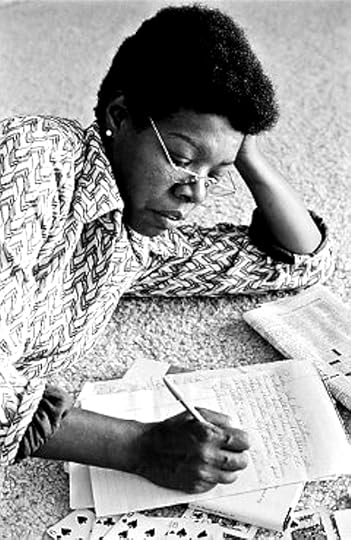
Learn more about Maya Angelou
. . . . . . . . . .
When I Think About Myself (1971)
When I think about myself,
I almost laugh myself to death,
My life has been one great big joke,
A dance that’s walked
A song that’s spoke,
I laugh so hard I almost choke
When I think about myself.
Sixty years in these folks’ world
The child I works for calls me girl
I say “Yes ma’am” for working’s sake.
Too proud to bend
Too poor to break,
I laugh until my stomach ache,
When I think about myself.
My folks can make me split my side,
I laughed so hard I nearly died,
The tales they tell, sound just like lying,
They grow the fruit,
But eat the rind,
I laugh until I start to crying,
When I think about my folks.
(From Just Give Me A Cool Drink Of Water ‘fore I Diiie, 1971)
Analysis of “When I Think About Myself”
. . . . . . . . . .
Alone (1975)
Lying, thinking
Last night
How to find my soul a home
Where water is not thirsty
And bread loaf is not stone
I came up with one thing
And I don’t believe I’m wrong
That nobody,
But nobody
Can make it out here alone.
Alone, all alone
Nobody, but nobody
Can make it out here alone.
There are some millionaires
With money they can’t use
Their wives run round like banshees
Their children sing the blues
They’ve got expensive doctors
To cure their hearts of stone.
But nobody
No, nobody
Can make it out here alone.
Alone, all alone
Nobody, but nobody
Can make it out here alone.
Now if you listen closely
I’ll tell you what I know
Storm clouds are gathering
The wind is gonna blow
The race of man is suffering
And I can hear the moan,
‘Cause nobody,
But nobody
Can make it out here alone.
Alone, all alone
Nobody, but nobody
Can make it out here alone.
(From Oh Pray My Wings Are Gonna Fit Me Well ©1975)
Analysis of “Alone”
. . . . . . . . . .
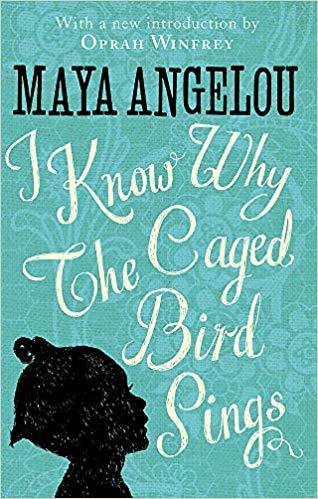
Quotes from I Know Why the Caged Bird Sings
. . . . . . . . . .
Still I Rise (1978)
You may write me down in history
With your bitter, twisted lies,
You may trod me in the very dirt
But still, like dust, I’ll rise.
Does my sassiness upset you?
Why are you beset with gloom?
’Cause I walk like I’ve got oil wells
Pumping in my living room.
Just like moons and like suns,
With the certainty of tides,
Just like hopes springing high,
Still I’ll rise.
Did you want to see me broken?
Bowed head and lowered eyes?
Shoulders falling down like teardrops,
Weakened by my soulful cries?
Does my haughtiness offend you?
Don’t you take it awful hard
’Cause I laugh like I’ve got gold mines
Diggin’ in my own backyard.
You may shoot me with your words,
You may cut me with your eyes,
You may kill me with your hatefulness,
But still, like air, I’ll rise.
Does my sexiness upset you?
Does it come as a surprise
That I dance like I’ve got diamonds
At the meeting of my thighs?
Out of the huts of history’s shame
I rise
Up from a past that’s rooted in pain
I rise
I’m a black ocean, leaping and wide,
Welling and swelling I bear in the tide.
Leaving behind nights of terror and fear
I rise
Into a daybreak that’s wondrously clear
I rise
Bringing the gifts that my ancestors gave,
I am the dream and the hope of the slave.
I rise
I rise
I rise.
(from And Still I Rise: A Book of Poems ©1978)
Analysis of “Still I Rise”
. . . . . . . . . .
Phenomenal Woman (1978)
Pretty women wonder where my secret lies.
I’m not cute or built to suit a fashion model’s size
But when I start to tell them,
They think I’m telling lies.
I say,
It’s in the reach of my arms
The span of my hips,
The stride of my step,
The curl of my lips.
I’m a woman
Phenomenally.
Phenomenal woman,
That’s me.
I walk into a room
Just as cool as you please,
And to a man,
The fellows stand or
Fall down on their knees.
Then they swarm around me,
A hive of honey bees.
I say,
It’s the fire in my eyes,
And the flash of my teeth,
The swing in my waist,
And the joy in my feet.
I’m a woman
Phenomenally.
Phenomenal woman,
That’s me.
Men themselves have wondered
What they see in me.
They try so much
But they can’t touch
My inner mystery.
When I try to show them
They say they still can’t see.
I say,
It’s in the arch of my back,
The sun of my smile,
The ride of my breasts,
The grace of my style.
I’m a woman
Phenomenally.
Phenomenal woman,
That’s me.
Now you understand
Just why my head’s not bowed.
I don’t shout or jump about
Or have to talk real loud.
When you see me passing
It ought to make you proud.
I say,
It’s in the click of my heels,
The bend of my hair,
the palm of my hand,
The need of my care,
‘Cause I’m a woman
Phenomenally.
Phenomenal woman,
That’s me.
(From And Still I Rise © 1978)
Analysis of “Phenomenal Woman”
. . . . . . . . . .
Woman Work (1978)
I’ve got the children to tend
The clothes to mend
The floor to mop
The food to shop
Then the chicken to fry
The baby to dry
I got company to feed
The garden to weed
I’ve got shirts to press
The tots to dress
The can to be cut
I gotta clean up this hut
Then see about the sick
And the cotton to pick.
Shine on me, sunshine
Rain on me, rain
Fall softly, dewdrops
And cool my brow again.
Storm, blow me from here
With your fiercest wind
Let me float across the sky
‘Til I can rest again.
Fall gently, snowflakes
Cover me with white
Cold icy kisses and
Let me rest tonight.
Sun, rain, curving sky
Mountain, oceans, leaf and stone
Star shine, moon glow
You’re all that I can call my own.
(From And Still I Rise, 1978)
Analysis of “Woman Work”
. . . . . . . . .
Caged Bird (1983)
A free bird leaps
on the back of the wind
and floats downstream
till the current ends
and dips his wing
in the orange sun rays
and dares to claim the sky.
But a bird that stalks
down his narrow cage
can seldom see through
his bars of rage
his wings are clipped and
his feet are tied
so he opens his throat to sing.
The caged bird sings
with a fearful trill
of things unknown
but longed for still
and his tune is heard
on the distant hill
for the caged bird
sings of freedom.
The free bird thinks of another breeze
and the trade winds soft through the sighing trees
and the fat worms waiting on a dawn bright lawn
and he names the sky his own
But a caged bird stands on the grave of dreams
his shadow shouts on a nightmare scream
his wings are clipped and his feet are tied
so he opens his throat to sing.
The caged bird sings
with a fearful trill
of things unknown
but longed for still
and his tune is heard
on the distant hill
for the caged bird
sings of freedom.
(From Shaker, Why Don’t You Sing? © 1983)
Analysis of “Caged Bird”
. . . . . . . . .
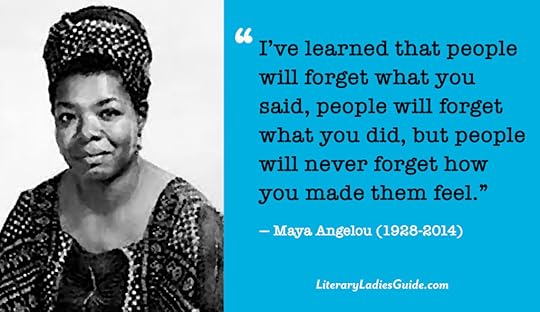
Maya Angelou Quotes to Live By
. . . . . . . . . .
Life Doesn’t Frighten Me (1993)
Shadows on the wall
Noises down the hall
Life doesn’t frighten me at all
Bad dogs barking loud
Big ghosts in a cloud
Life doesn’t frighten me at all
Mean old Mother Goose
Lions on the loose
They don’t frighten me at all
Dragons breathing flame
On my counterpane
That doesn’t frighten me at all.
I go boo
Make them shoo
I make fun
Way they run
I won’t cry
So they fly
I just smile
They go wild
Life doesn’t frighten me at all.
Tough guys fight
All alone at night
Life doesn’t frighten me at all.
Panthers in the park
Strangers in the dark
No, they don’t frighten me at all.
That new classroom where
Boys all pull my hair
(Kissy little girls
With their hair in curls)
They don’t frighten me at all.
Don’t show me frogs and snakes
And listen for my scream,
If I’m afraid at all
It’s only in my dreams.
I’ve got a magic charm
That I keep up my sleeve
I can walk the ocean floor
And never have to breathe.
Life doesn’t frighten me at all
Not at all
Not at all.
Life doesn’t frighten me at all.
(From a children’s book of the same title, 1993)
Analysis of “Life Doesn’t Frighten Me”
. . . . . . . . .
On the Pulse of Morning (1993)
A Rock, A River, A Tree
Hosts to species long since departed,
Marked the mastodon,
The dinosaur, who left dried tokens
Of their sojourn here
On our planet floor,
Any broad alarm of their hastening doom
Is lost in the gloom of dust and ages.
But today, the Rock cries out to us, clearly, forcefully,
Come, you may stand upon my
Back and face your distant destiny,
But seek no haven in my shadow,
I will give you no hiding place down here.
You, created only a little lower than
The angels, have crouched too long in
The bruising darkness
Have lain too long
Facedown in ignorance,
Your mouths spilling words
Armed for slaughter.
The Rock cries out to us today,
You may stand upon me,
But do not hide your face.
(From On the Pulse of Morning,© 1993)
Analysis of “On the Pulse of the Morning”
. . . . . . . . . . .
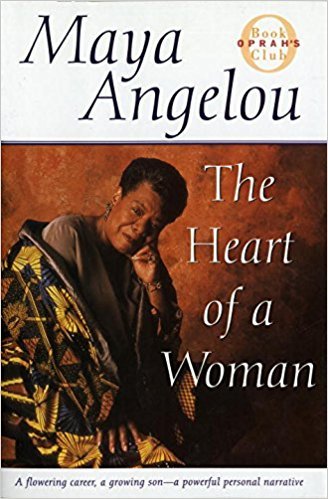
Maya Angelou page on Amazon*
. . . . . . . . . . .
Touched by An Angel (1995)
We, unaccustomed to courage
exiles from delight
live coiled in shells of loneliness
until love leaves its high holy temple
and comes into our sight
to liberate us into life.
Love arrives
and in its train come ecstasies
old memories of pleasure
ancient histories of pain.
Yet if we are bold,
love strikes away the chains of fear
from our souls.
We are weaned from our timidity
In the flush of love’s light
we dare be brave
And suddenly we see
that love costs all we are
and will ever be.
Yet it is only love
which sets us free.
. . . . . . . . .
A Brave and Startling Truth (1995)
We, this people, on a small and lonely planet
Traveling through casual space
Past aloof stars, across the way of indifferent suns
To a destination where all signs tell us
It is possible and imperative that we learn
A brave and startling truth
And when we come to it
To the day of peacemaking
When we release our fingers
From fists of hostility
And allow the pure air to cool our palms
When we come to it
When the curtain falls on the minstrel show of hate
And faces sooted with scorn are scrubbed clean
When battlefields and coliseum
No longer rake our unique and particular sons and daughters
Up with the bruised and bloody grass
To lie in identical plots in foreign soil
When the rapacious storming of the churches
The screaming racket in the temples have ceased
When the pennants are waving gaily
When the banners of the world tremble
Stoutly in the good, clean breeze
When we come to it
When we let the rifles fall from our shoulders
And children dress their dolls in flags of truce
When land mines of death have been removed
And the aged can walk into evenings of peace
When religious ritual is not perfumed
By the incense of burning flesh
And childhood dreams are not kicked awake
By nightmares of abuse
When we come to it
Then we will confess that not the Pyramids
With their stones set in mysterious perfection
Nor the Gardens of Babylon
Hanging as eternal beauty
In our collective memory
Not the Grand Canyon
Kindled into delicious color
By Western sunsets
Nor the Danube, flowing its blue soul into Europe
Not the sacred peak of Mount Fuji
Stretching to the Rising Sun
Neither Father Amazon nor Mother Mississippi who, without favor,
Nurture all creatures in the depths and on the shores
These are not the only wonders of the world
When we come to it
We, this people, on this minuscule and kithless globe
Who reach daily for the bomb, the blade and the dagger
Yet who petition in the dark for tokens of peace
We, this people on this mote of matter
In whose mouths abide cankerous words
Which challenge our very existence
Yet out of those same mouths
Come songs of such exquisite sweetness
That the heart falters in its labor
And the body is quieted into awe
We, this people, on this small and drifting planet
Whose hands can strike with such abandon
That in a twinkling, life is sapped from the living
Yet those same hands can touch with such healing, irresistible tenderness
That the haughty neck is happy to bow
And the proud back is glad to bend
Out of such chaos, of such contradiction
We learn that we are neither devils nor divines
When we come to it
We, this people, on this wayward, floating body
Created on this earth, of this earth
Have the power to fashion for this earth
A climate where every man and every woman
Can live freely without sanctimonious piety
Without crippling fear
When we come to it
We must confess that we are the possible
We are the miraculous, the true wonder of this world
That is when, and only when
We come to it.
. . . . . . . . .
*This is an Amazon Affiliate link. If the product is purchased by linking through, Literary Ladies Guide receives a modest commission, which helps maintain our site and helps it to continue growing!
The post 10 Celebrated Poems by Maya Angelou appeared first on Literary Ladies Guide.
March 16, 2020
4 Intrepid American Female Newspaper Publishers of the 1800s
For a small number of American female journalist-reformers of the 1800s, starting their own newspapers became a matter of necessity. Refused the opportunity to report on matters of importance by male-dominated mainstream newspapers, they took matters into their own hands.
Launching their own newspapers became platforms for raising awareness of the justice issues they fought for.
Anne Newport Royall, Mary Ann Shadd Cary, and Jovita Idár are no longer familiar names; Ida B. Wells (pictured above right) might be better known to those interested in African-American history. But all deserve to be better known and deserve a place of honor as publisher-reformers in an era when women’s voices were more often silenced than heard.
Fighting for the right to report
Even before women began fighting for the right to vote, they fought for the right to report. Women journalists wore their independence proudly, often refusing to conform to gender roles and society’s random limits for women.
In the 1800s, the few women who managed to step inside the world of newspaper work at all were often steered to writing about society, fashion, and domestic topics.
Those who wanted to report on hard news and social justice issues were usually thwarted. For a few undaunted women, there was just one remedy —to publish newspapers of their own.
. . . . . . . . . .
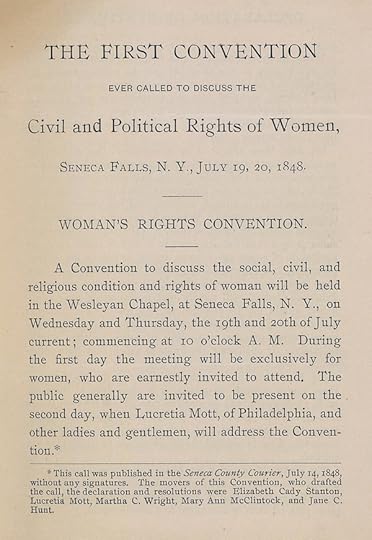 . . . . . . . . . .
. . . . . . . . . .
Seneca Falls Convention, 1848 — a turning point
The Seneca Falls Convention of 1848 proved to be something of a national turning point for American women. It was the first national event devoted to waking women up to their second-class citizenship.
Husbands and fathers controlled the lives of wives and daughters; females couldn’t own property or sign contracts; and of course, they couldn’t vote. Job prospects were mainly limited to poorly paid service and domestic work or teaching.
At the same time, the issue of slavery was tearing the country apart. Many of the same people (both male and female) involved with women’s rights were also involved in the abolition movement. Journalists often crossed paths and pens working for these causes and writing for anti-slavery and pro-women newspapers.
Reform-minded journalists
Following the Civil War, the slavery question may have been legally settled, but life for African-Americans continued to be challenging, if not downright dreadful. The women’s rights movement was in full force, but progress was painfully slow.
Reform-minded journalists weren’t willing to wait for permission to report on the injustice woven into every aspect of American life — civil rights, women’s rights, labor, immigration, education, and more.
Though women who started newspapers were few and far between, the listing that follows is by no means a complete overview. Susan B. Anthony and Elizabeth Cady Stanton, for example, started and ran the women’s suffrage newspaper, The Revolution, from 1868 to 1872. But their names live on in the American consciousness. And you can read about Victoria Woodhull and The Weekly, a radical reform newspaper she launched with her husband and sister.
Here we focus on four women newspaper publishers who aren’t as well known today. Their lives and the spirit of the work they did deserve to be remembered and honored today, as they blazed trails for today’s female journalists and publishers.
. . . . . . . . .
Anne Newport Royall (1769 – 1854)
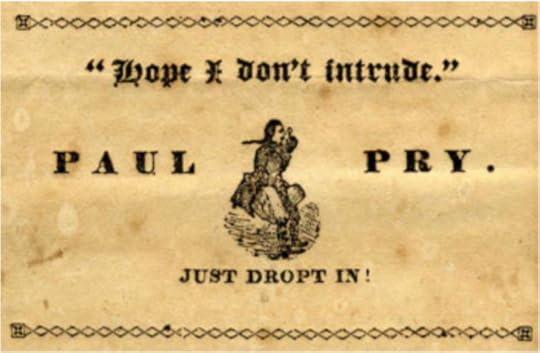
“Free thought, free speech, and a free press!” That was the rallying cry of Anne Newport Royall, considered America’s first female journalist. Growing up impoverished and fatherless, she started her youth and adult life as a domestic servant.
Her writing career was launched later in life with a series of books filled with colorful accounts of southern states and territories. That made her a pioneering travel journalist, and she also broke ground as a political and investigative reporter.
Always poor and forever struggling, Anne used all of her resources to start a newspaper. She was in her early 60s when she launched it in 1831 under the odd name Paul Pry. Later, she updated the name to The Huntress. There are no existing images of Anne Newport Royall, so we have to be content with an advertisement for Paul Pry, above.
In her own words, the paper was “dedicated to exposing all and every species of political evil and religious fraud, without fear or affection.”
Indeed, publishing her paper was hard going. It was written of her venture that “snow sometimes covered the floor where her paper was printed and the ink froze before it could record her blistering phrases.”
Anne was feared and scorned by Washington, D.C.’s powerful men — politicians, businessmen, and religious leaders — who dreaded seeing their names in her newspaper. But she dared to publish the truth. She was even convicted of being “a public scold” — which was actually a crime at the time!
Pushed down flights of stairs, beaten about the head, and ducking rocks thrown through her windows, nothing stopped her and no one intimidated her. She continued to publish The Huntress until she drew her last breath at age eighty-five, in 1854. It was all the more remarkable that she accomplished much of what she did before women officially began agitating for rights in the mid-19800s.
. . . . . . . . . .
Mary Ann Shadd Cary (1823 – 1893)
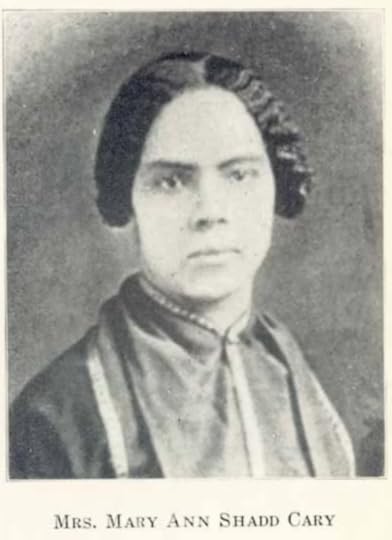
Mary Ann Shadd (later adding the name Cary when she married) was the proverbial apple who didn’t fall far from the tree. Growing up as the oldest of thirteen siblings in a close-knit free black family, she was deeply influenced by her parents’ devotion to equality. The Shadd family’s home was a stop on the Underground Railroad.
When the Fugitive Slave Act was passed in 1850, it put runaway slaves at ever greater peril. And for the first time, freeborn African-Americans like the Shadd family were also at risk of being captured and enslaved. Mary Ann and her brother moved to Canada, and the rest of the family soon followed.
In Chatham, Ontario, Mary Ann started a newspaper called The Provincial Freeman. This made her the first black woman publisher in all of North America, and the first woman publisher of any race in Canada. The Freeman promoted abolition and women’s rights, yet also fed the soul of Ontario’s black population (some 20,000) with literature and culture.
As the newspaper’s publisher and editor from 1853 to 1861, Mary Ann fearlessly traveled back and forth to the U.S. to gather news. After the Civil War broke out, she left her family behind in Canada, moved back to the U.S., and worked for the Union Army to recruit black soldiers.
First a teacher, then a journalist, Mary Ann was never content to rest on her laurels. She liked to say “It’s better to wear out than to rust out.” She earned a law degree, making her the second African-American woman to do so, and spent the last decade of her life practicing law in Washington, D.C. Learn more about the remarkable Mary Ann Shadd Cary on this site.
. . . . . . . . . .
Ida B. Wells (1862 – 1931)
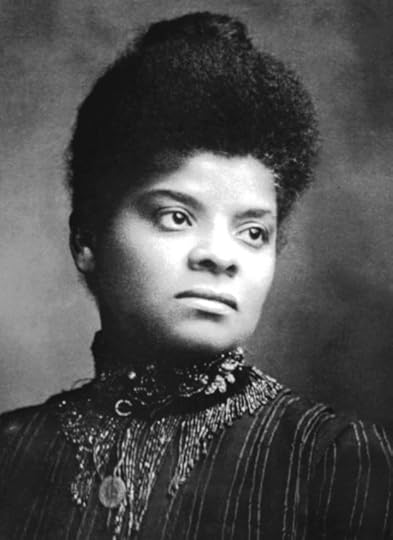
Ida B. Wells (also known as Ida B. Wells Barnett, 1862 – 1931) remains one of the legendary names of American journalism. More than seventy years before Rosa Parks refused to move to the back of a bus, Ida Bell Wells refused to move to the smoking car of a train where black passengers were expected to sit.
Ida filed a lawsuit against the railroad company following this 1884 incident and won — though the decision was later reversed. The story of her courage spread, and she was invited to write for black newspapers that were cropping up in big cities.
She contributed so many articles to The New York Age, The Detroit Plaindealer, and the Indianapolis World that she was dubbed “Princess of the Black Press.”
But Ida didn’t care to be a princess. In 1889 she started her newspaper in Memphis, her home town. Free Speech and Headlight supported women’s voting rights and promoted African-American education. Making so much noise about these issues made white people uncomfortable, and she was forced out of Memphis. Her newspaper had to be abandoned.
Ida moved to New York City and devoted her career to fighting lynching, the barbaric mob murders that claimed thousands of black lives. Greatly respected during her lifetime, Ida’s reputation continued to grow after her death.
Journalism awards and scholarships have been established in her honor, and there’s a museum celebrating her life and work in her home state of Missouri. A monument to her legacy is currently being built in Chicago.
. . . . . . . . . . .
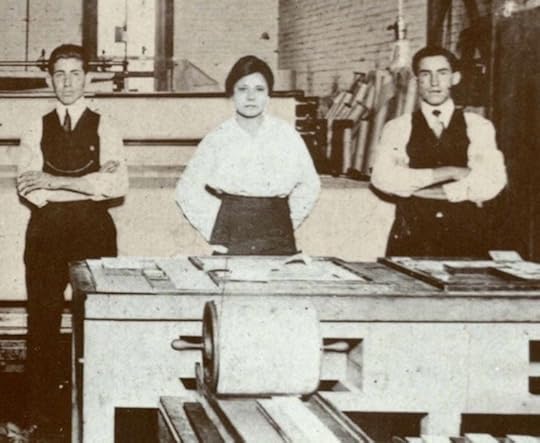
Jovita Idár (1885 – 1946) was a Mexican-American journalist and activist who grew up a large family dedicated to improving the lives of the Latino community in Laredo, Texas and beyond. Clever and imaginative as a girl, Jovita loved to study and adored writing — especially poetry.
She earned a teaching certificate in 1903 and went to work in nearby Los Ojuelos. Her Mexican-America students were forced into poorly equipped, segregated classrooms. There weren’t enough chairs and desks for them; even basics like paper and pencils were in short supply. Jovita found it extremely frustrating and wondered if she could help the schools more as a journalist.
Jovita’s father published a newspaper called La Crónica, a strong voice for Mexican-Americans in Texas. Jovita joined the paper and went undercover to expose the horrendous living and working conditions of Mexican-American laborers. She discovered the power of the printed word to create social change.
Her greatest passion was improving education for girls and poor children. To promote feminist ideals, she started another newspaper, Evolución. She also wrote editorials for other papers that promoted social change.
When the Texas Rangers and U.S. Army came to shut down one of them, she stood in the doorway to keep them from entering. Jovita ran her father’s newspaper after he died in 1914, and dedicated her career as a journalist and activist to improving the lives, schools, and working conditions of Mexican-Americans.
You may also enjoy …

10 pioneering African-American Women Journalists
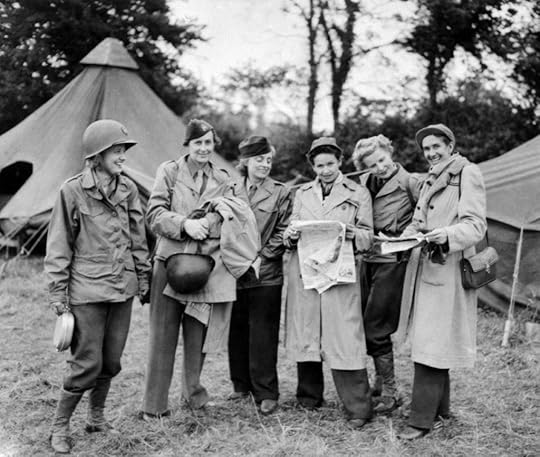
6 Female Journalists of the World War II Era
The post 4 Intrepid American Female Newspaper Publishers of the 1800s appeared first on Literary Ladies Guide.
March 13, 2020
12 Poems by Marianne Moore, Influential Modernist Poet
Marianne Moore (1887 – 1972) isn’t an easy poet to read or digest. Yet the patient and diligent reader will be amply rewarded. Here are 12 poems by Marianne Moore sampled from a long writing career that blossomed in the early 1920s and started even earlier than that.
Moore was a modernist poet who both influenced and was influenced by other modernist poets. In Marianne Moore: A Literary Life, biographer Charles Molesworth, attempted to sum up what made her the poet she came to be, not an easy task:
“It will not do to replace with something like tough-mindedness the picture of Moore’s obscurity or eccentricity or what she called, in a different context but with a hint of playful self-description her ‘Moor-ish gorgeousness.’
She is simple and complex, direct and subtle; her tone often blends the natural and the highly cultivated. Better if her readers try to maintain more than a single perspective.
Moore, clearly one of the most well-read and intelligent writers of her generation … never flaunted her learning. In an essay published in 1957, called ‘Subject, Predicate, Object,’ she spoke of the influence her mother had on her by awakening in her a strong curiosity in things like history.
But she went on: ‘Curiosity; and books. I think books are chiefly responsible for my doggedly self-determined efforts to write; books and verisimilitude; I like to describe things.’
This is very revealing, because Moore is first and last a literary poet; her intelligence and experience are bound up with reading, in a way outmoded among many people today.”
. . . . . . . . . .
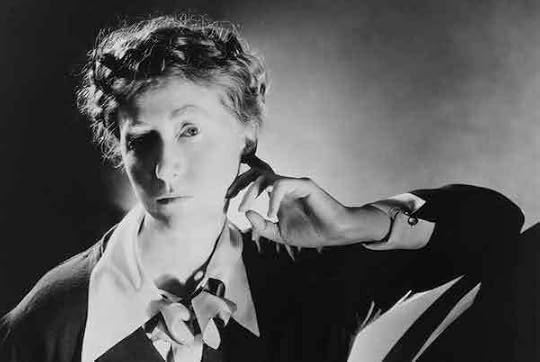
Marianne Moore in 1935
. . . . . . . . . .
In addition to the poems following, here’s an entire post dedicated to “Marriage” — one of Moore’s longest and most complex poems.
. . . . . . . . . .
Poetry
I too, dislike it: there are things that are important beyond
all this fiddle.
Reading it, however, with a perfect contempt for it, one
discovers that there is in
it after all, a place for the genuine.
Hands that can grasp, eyes
that can dilate, hair that can rise
if it must, these things are important not because a
high-sounding interpretation can be put upon them but because
they are
useful; when they become so derivative as to become
unintelligible, the
same thing may be said for all of us—that we
do not admire what
we cannot understand. The bat,
holding on upside down or in quest of something to
eat, elephants pushing, a wild horse taking a roll, a tireless
wolf under
a tree, the immovable critic twinkling his skin like a horse
that feels a flea, the base-
ball fan, the statistician—case after case
could be cited did
one wish it; nor is it valid
to discriminate against “business documents and
school-books”; all these phenomena are important. One must
make a distinction
however: when dragged into prominence by half poets,
the result is not poetry,
nor till the autocrats among us can be
“literalists of
the imagination”—above
insolence and triviality and can present
for inspection, imaginary gardens with real toads in them,
shall we have
it. In the meantime, if you demand on the one hand, in
defiance of their opinion—
the raw material of poetry in
all its rawness, and
that which is on the other hand,
genuine, then you are interested in poetry.
(First published in Others for 1919: An Anthology of the New Verse)
. . . . . . . . . . .
Baseball and Writing
(Suggested by post-game broadcasts)
Fanaticism? No.Writing is exciting
and baseball is like writing.
You can never tell with either
how it will go
or what you will do;
generating excitement—
a fever in the victim—
pitcher, catcher, fielder, batter.
Victim in what category?
Owlman watching from the press box?
To whom does it apply?
Who is excited? Might it be I?
It’s a pitcher’s battle all the way—a duel—
a catcher’s, as, with cruel
puma paw, Elston Howard lumbers lightly
back to plate.(His spring
de-winged a bat swing.)
They have that killer instinct;
yet Elston—whose catching
arm has hurt them all with the bat—
when questioned, says, unenviously,
“I’m very satisfied. We won.”
Shorn of the batting crown, says, “We”;
robbed by a technicality.
When three players on a side play three positions
and modify conditions,
the massive run need not be everything.
“Going, going . . . “Is
it? Roger Maris
has it, running fast.You will
never see a finer catch.Well . . .
“Mickey, leaping like the devil”—why
gild it, although deer sounds better—
snares what was speeding towards its treetop nest,
one-handing the souvenir-to-be
meant to be caught by you or me.
Assign Yogi Berra to Cape Canaveral;
he could handle any missile.
He is no feather.”Strike! . . . Strike two!”
Fouled back.A blur.
It’s gone.You would infer
that the bat had eyes.
He put the wood to that one.
Praised, Skowron says, “Thanks, Mel.
I think I helped a little bit.”
All business, each, and modesty.
Blanchard, Richardson, Kubek, Boyer.
In that galaxy of nine, say which
won the pennant? Each. It was he.
Those two magnificent saves from the knee-throws
by Boyer, finesses in twos—
like Whitey’s three kinds of pitch and pre-
diagnosis
with pick-off psychosis.
Pitching is a large subject.
Your arm, too true at first, can learn to
catch your corners—even trouble
Mickey Mantle.(“Grazed a Yankee!
My baby pitcher, Montejo!”
With some pedagogy,
you’ll be tough, premature prodigy.)
They crowd him and curve him and aim for the knees. Trying
indeed! The secret implying:
“I can stand here, bat held steady.”
One may suit him;
none has hit him.
Imponderables smite him.
Muscle kinks, infections, spike wounds
require food, rest, respite from ruffians. (Drat it!
Celebrity costs privacy!)
Cow’s milk, “tiger’s milk,” soy milk, carrot juice,
brewer’s yeast (high-potency—
concentrates presage victory
sped by Luis Arroyo, Hector Lopez—
deadly in a pinch. And “Yes,
it’s work; I want you to bear down,
but enjoy it
while you’re doing it.”
Mr. Houk and Mr. Sain,
if you have a rummage sale,
don’t sell Roland Sheldon or Tom Tresh.
Studded with stars in belt and crown,
the Stadium is an adastrium.
O flashing Orion,
your stars are muscled like the lion.
(From The Complete Poems of Marianne Moore © 1961, 1989)
. . . . . . . . .
Nevertheless
you’ve seen a strawberry
that’s had a struggle; yet
was, where the fragments met,
a hedgehog or a star-
fish for the multitude
of seeds. What better food
than apple seeds – the fruit
within the fruit – locked in
like counter-curved twin
hazelnuts? Frost that kills
the little rubber-plant –
leaves of kok-sagyyz-stalks, can’t
harm the roots; they still grow
in frozen ground. Once where
there was a prickley-pear –
leaf clinging to a barbed wire,
a root shot down to grow
in earth two feet below;
as carrots from mandrakes
or a ram’s-horn root some-
times. Victory won’t come
to me unless I go
to it; a grape tendril
ties a knot in knots till
knotted thirty times – so
the bound twig that’s under-
gone and over-gone, can’t stir.
The weak overcomes its
menace, the strong over-
comes itself. What is there
like fortitude! What sap
went through that little thread
to make the cherry red!
(Title poem from the collection Nevertheless, 1944)
. . . . . . . . . .
Rosemary
Beauty and Beauty’s son and rosemary–
Venus and Love, her son, to speak plainly—
born of the sea supposedly,
at Christmas each, in company,
braids a garland of festivity.
Not always rosemary—
since the flight to Egypt, blooming indifferently.
With lancelike leaf, green but silver underneath,
its flowers– white originally —
turned blue. The herb of memory,
imitating the blue robe of Mary,
is not too legendary
to flower both as symbol and as pungency.
Springing from stones beside the sea,
the height of Christ when he was thirty—three,
it feeds on dew and to the bee
“hath a dumb language”; is in reality
a kind of Christmas tree.
. . . . . . . . .
A Grave
Man looking into the sea,
taking the view from those who have as much right to it as you
have to yourself,
it is human nature to stand in the middle of a thing,
but you cannot stand in the middle of this;
the sea has nothing to give but a well excavated grave.
The firs stand in a procession, each with an emerald turkey-foot at
the top,
reserved as their contours, saying nothing;
repression, however, is not the most obvious characteristic of the
sea;
the sea is a collector, quick to return a rapacious look.
There are others besides you who have worn that look—
whose expression is no longer a protest; the fish no longer
investigate them
for their bones have not lasted:
men lower nets, unconscious of the fact that they are desecrating
a grave,
and row quickly away—the blades of the oars
moving together like the feet of water-spiders as if there were no
such thing as death.
The wrinkles progress among themselves in a phalanx—beautiful
under networks of foam,
and fade breathlessly while the sea rustles in and out of the
seaweed;
the birds swim through the air at top speed, emitting cat-calls as
heretofore—
the tortoise-shell scourges about the feet of the cliffs, in motion
beneath them;
and the ocean, under the pulsation of lighthouses and noise of
bellbuoys,
advances as usual, looking as if it were not that ocean in which
dropped things are bound to sink—
in which if they turn and twist, it is neither with volition nor
consciousness.
(1921; later published in The Complete Poems of Marianne Moore, © 1981)
. . . . . . . . .

Marianne Moore page on Amazon*
. . . . . . . . .
The Paper Nautilus
For authorities whose hopes
are shaped by mercenaries?
Writers entrapped by
teatime fame and by
commuters’ comforts? Not for these
the paper nautilus
constructs her thin glass shell.
Giving her perishable
souvenir of hope, a dull
white outside and smooth-
edged inner surface
glossy as the sea, the watchful
maker of it guards it
day and night; she scarcely
eats until the eggs are hatched.
Buried eight-fold in her eight
arms, for she is in
a sense a devil-
fish, her glass ram’s horn-cradled freight
is hid but is not crushed;
as Hercules, bitten
by a crab loyal to the hydra,
was hindered to succeed,
the intensively
watched eggs coming from
the shell free it when they are freed,—
leaving its wasp-nest flaws
of white on white, and close-
laid Ionic chiton-folds
like the lines in the mane of
a Parthenon horse,
round which the arms had
wound themselves as if they knew love
is the only fortress
strong enough to trust to.
(From The Complete Poems of Marianne Moore © 1961, 1989)
. . . . . . . . . .
The Past Is the Present
Revived bitterness
is unnecessary unless
One is ignorant.
To-morrow will be
Yesterday unless you say the
Days of the week back-
Ward. Last weeks’ circus
Overflow frames an old grudge. Thus:
When you attempt to
Force the doors and come
At the cause of the shouts, you thumb
A brass nailed echo.
(This poem is in the public domain)
. . . . . . . . .
Picking and Choosing
Literature is a phase of life: if
one is afraid of it, the situation is irremediable; if
one approaches it familiarly,
what one says of it is worthless. Words are constructive
when they are true; the opaque allusion—the simulated flight
upward—accomplishes nothing. Why cloud the fact
that Shaw if self-conscious in the field of sentiment but is
otherwise rewarding? that James is all that has been
said of him but is not profound? It is not Hardy
the distinguished novelist and Hardy the poet, but one man
“interpreting life through the medium of the
emotions.” If he must give an opinion, it is permissible that the
critic should know what he likes. Gordon
Craig with his “this is I” and “this is mine,” with his three
wise men, his “sad French greens” and his Chinese cherries—
Gordon Craig, so
inclinational and unashamed—has carried
the percept of being a good critic, to the last extreme. And
Burke is a
psychologist—of acute, raccoon-
like curiosity. Summa diligentia;
to the humbug whose name is so amusing—very young and very
rushed, Caesar crossed the Alps on the “top of a
diligence.” We are not daft about the meaning but this
familiarity
with wrong meanings puzzles one. Humming-
bug, the candles are not wired for electricity.
Small dog, going over the lawn, nipping the linen and saying
that you have a badger—remember Xenophon;
only the most rudimentary sort of behavior is necessary
to put us on the scent; a “right good
salvo of barks,” a few “strong wrinkles” puckering the
skin between the ears, are all we ask.
(ca. 1920; This poem is in the public domain)
. . . . . . . . . . .
You Say You Said
“Few words are best.”
Not here. Discretion has been abandoned in this part
of the world too lately
For it to be admired. Disgust for it is like the
Equinox—all things in
One. Disgust is
No psychologist and has not opportunity to be a hypocrite.
It says to the saw-toothed bayonet and to the cue
Of blood behind the sub-
Marine—to the
Poisoned comb, to the Kaiser of Germany and to the
intolerant gateman at the exit from the eastbound ex-
press: “I hate
You less than you must hate
Yourselves: You have
Accoutred me. ‘Without enemies one’s courage flags.’
Your error has been timed
To aid me, I am in debt to you for you have primed
Me against subterfuge.”
(1918; This poem is in the public domain)
. . . . . . . . . . .
Ennui
He often expressed
A curious wish,
To be interchangeably
Man and fish;
To nibble the bait
Off the hook,
Said he,
And then slip away
Like a ghost
In the sea.
(1909; This poem is in the public domain)
. . . . . . . . . . .
When I Buy Pictures
or what is closer to the truth,
when I look at that of which I may regard myself as the imaginary
possessor,
I fix upon what would give me pleasure in my average moments:
the satire upon curiosity in which no more is discernible
than the intensity of the mood;
or quite the opposite—the old thing, the medieval decorated hat-
box,
in which there are hounds with waists diminishing like the waist
of the hour-glass,
and deer and birds and seated people;
it may be no more than a square of parquetry; the literal
biography perhaps,
in letters standing well apart upon a parchment-like expanse;
an artichoke in six varieties of blue; the snipe-legged hieroglyphic
in three parts;
the silver fence protecting Adam’s grave, or Michael taking Adam
by the wrist.
Too stern an intellectual emphasis upon this quality or that
detracts from one’s enjoyment.
It must not wish to disarm anything; nor may the approved
triumph easily be honored—
that which is great because something else is small.
It comes to this: of whatever sort it is,
it must be “lit with piercing glances into the life of things”;
it must acknowledge the spiritual forces which have made it.
(1921; This poem is in the public domain)
. . . . . . . . . . .
Silence
My father used to say,
“Superior people never make long visits,
have to be shown Longfellow’s grave
or the glass flowers at Harvard.
Self-reliant like the cat—
that takes its prey to privacy,
the mouse’s limp tail hanging like a shoelace from its mouth—
they sometimes enjoy solitude,
and can be robbed of speech
by speech which has delighted them.
The deepest feeling always shows itself in silence;
not in silence, but restraint.”
Nor was he insincere in saying, “Make my house your inn.”
Inns are not residences.
(1924; First published in The Dial)
. . . . . . . . . .
*This is an Amazon Affiliate link. If the product is purchased by linking through, Literary Ladies Guide receives a modest commission, which helps maintain our site and helps it to continue growing!
The post 12 Poems by Marianne Moore, Influential Modernist Poet appeared first on Literary Ladies Guide.
March 10, 2020
“Marriage” — A Modernist Poem by Marianne Moore (1923)
“Marriage” is a 1923 modernist poem by Marianne Moore that’s considered one of her most fascinating, yet challenging works. Requiring a great deal of insight to fully appreciate, it’s presented here in full, with links to two excellent and thorough analyses.
Marianne Moore (1887 – 1972 ) has stood the test of time as one of the pre-eminent American poets. Born in St. Louis, she graduated from Bryn Mawr in 1909, and had her first work published in Poetry magazine in 1915. Collected Poems (1951) won a Pulitzer Prize as well as the National Book Award.
A thorough study guide to “Marriage” introduces its premise:
“The first twenty lines consist of Moore’s introduction to the subject of her poem—marriage, and why there needs to be a public promise for a private obligation. She refers to the institution as an ‘enterprise,’ which makes it sound like a business, something utilitarian and anonymous rather than passionate and personal.”
And writes in an essay that illuminates this lengthy poem:
“Published in 1923, just a year after the appearance of Ulysses and The Waste Land, Marianne Moore’s ‘Marriage’ is a landmark of High Modernism and one of her most ambitious and important works. “Marriage” is a long, complicated collage of statements and quotations regarding the institution of marriage and its problems as well as a critical exploration of gender roles and the relations between men and women.
This remarkable masterpiece stands apart from the rest of Moore’s work for several reasons: it is her longest and one of her most difficult, experimental works; it is perhaps her most openly feminist poem in its critique of marriage and patriarchy; and with its contradictory attitudes, it is also among her most ambivalent and complex.”
. . . . . . . . . .
Marriage by Marianne Moore
This institution,
perhaps one should say enterprise
out of respect for which
one says one need not change one’s mind
about a thing one has believed in,
requiring public promises
of one’s intention
to fulfill a private obligation:
I wonder what Adam and Eve
think of it by this time,
this firegilt steel
alive with goldenness;
how bright it shows —
“of circular traditions and impostures,
committing many spoils,”
requiring all one’s criminal ingenuity
to avoid!
Psychology which explains everything
explains nothing
and we are still in doubt.
Eve: beautiful woman —
I have seen her
when she was so handsome
she gave me a start,
able to write simultaneously
in three languages —
English, German and French
and talk in the meantime;
equally positive in demanding a commotion
and in stipulating quiet:
“I should like to be alone;”
to which the visitor replies,
“I should like to be alone;
why not be alone together?”
Below the incandescent stars
below the incandescent fruit,
the strange experience of beauty;
its existence is too much;
it tears one to pieces
and each fresh wave of consciousness
is poison.
“See her, see her in this common world,”
the central flaw
in that first crystal-fine experiment,
this amalgamation which can never be more
than an interesting possibility,
describing it
as “that strange paradise
unlike flesh, gold, or stately buildings,
the choicest piece of my life:
the heart rising
in its estate of peace
as a boat rises
with the rising of the water;”
constrained in speaking of the serpent —
that shed snakeskin in the history of politeness
not to be returned to again —
that invaluable accident
exonerating Adam.
And he has beauty also;
it’s distressing — the O thou
to whom, from whom,
without whom nothing — Adam;
“something feline,
something colubrine” — how true!
a crouching mythological monster
in that Persian miniature of emerald mines,
raw silk — ivory white, snow white,
oyster white and six others —
that paddock full of leopards and giraffes —
long lemonyellow bodies
sown with trapezoids of blue.
Alive with words,
vibrating like a cymbal
touched before it has been struck,
he has prophesied correctly —
the industrious waterfall,
“the speedy stream
which violently bears all before it,
at one time silent as the air
and now as powerful as the wind.”
“Treading chasms
on the uncertain footing of a spear,”
forgetting that there is in woman
a quality of mind
which is an instinctive manifestation
is unsafe,
he goes on speaking
in a formal, customary strain
of “past states,” the present state,
seals, promises,
the evil one suffered,
the good one enjoys,
hell, heaven,
everything convenient
to promote one’s joy.”
There is in him a state of mind
by force of which,
perceiving what it was not
intended that he should,
“he experiences a solemn joy
in seeing that he has become an idol.”
Plagued by the nightingale
in the new leaves,
with its silence —
not its silence but its silences,
he says of it:
“It clothes me with a shirt of fire.”
“He dares not clap his hands
to make it go on
lest it should fly off;
if he does nothing, it will sleep;
if he cries out, it will not understand.”
Unnerved by the nightingale
and dazzled by the apple,
impelled by “the illusion of a fire
effectual to extinguish fire,”
compared with which
the shining of the earth
is but deformity — a fire
“as high as deep as bright as broad
as long as life itself,”
he stumbles over marriage,
“a very trivial object indeed”
to have destroyed the attitude
in which he stood —
the ease of the philosopher
unfathered by a woman.
Unhelpful Hymen!
“a kind of overgrown cupid”
reduced to insignificance
by the mechanical advertising
parading as involuntary comment,
by that experiment of Adam’s
with ways out but no way in —
the ritual of marriage,
augmenting all its lavishness;
its fiddle-head ferns,
lotus flowers, opuntias, white dromedaries,
its hippopotamus —
nose and mouth combined
in one magnificent hopper,
“the crested screamer —
that huge bird almost a lizard,”
its snake and the potent apple.
He tells us
that “for love
that will gaze an eagle blind,
that is like a Hercules
climbing the trees
in the garden of the Hesperides,
from forty-five to seventy
is the best age,”
commending it
as a fine art, as an experiment,
a duty or as merely recreation.
One must not call him ruffian
nor friction a calamity —
the fight to be affectionate:
“no truth can be fully known
until it has been tried
by the tooth of disputation.”
The blue panther with black eyes,
the basalt panther with blue eyes,
entirely graceful —
one must give them the path —
the black obsidian Diana
who “darkeneth her countenance
as a bear doth,
causing her husband to sigh,”
the spiked hand
that has an affection for one
and proves it to the bone,
impatient to assure you
that impatience is the mark of independence
not of bondage.
“Married people often look that way” —
“seldom and cold, up and down,
mixed and malarial
with a good day and bad.”
“When do we feed?”
We occidentals are so unemotional,
we quarrel as we feed;
one’s self is quite lost,
the irony preserved
in “the Ahasuerus tête à tête banquet”
with its “good monster, lead the way,”
with little laughter
and munificence of humor
in that quixotic atmosphere of frankness
in which “Four o’clock does not exist
but at five o’clock
the ladies in their imperious humility
are ready to receive you”;
in which experience attests
that men have power
and sometimes one is made to feel it.
He says, “what monarch would not blush
to have a wife
with hair like a shaving-brush?
The fact of woman
is not `the sound of the flute
but every poison.'”
She says, “`Men are monopolists
of stars, garters, buttons
and other shining baubles’ —
unfit to be the guardians
of another person’s happiness.”
He says, “These mummies
must be handled carefully —
`the crumbs from a lion’s meal,
a couple of shins and the bit of an ear’;
turn to the letter M
and you will find
that `a wife is a coffin,’
that severe object
with the pleasing geometry
stipulating space and not people,
refusing to be buried
and uniquely disappointing,
revengefully wrought in the attitude
of an adoring child
to a distinguished parent.”
She says, “This butterfly,
this waterfly, this nomad
that has `proposed
to settle on my hand for life.’ —
What can one do with it?
There must have been more time
in Shakespeare’s day
to sit and watch a play.
You know so many artists are fools.”
He says, “You know so many fools
who are not artists.”
The fact forgot
that “some have merely rights
while some have obligations,”
he loves himself so much,
he can permit himself
no rival in that love.
She loves herself so much,
she cannot see herself enough —
a statuette of ivory on ivory,
the logical last touch
to an expansive splendor
earned as wages for work done:
one is not rich but poor
when one can always seem so right.
What can one do for them —
these savages
condemned to disaffect
all those who are not visionaries
alert to undertake the silly task
of making people noble?
This model of petrine fidelity
who “leaves her peaceful husband
only because she has seen enough of him” —
that orator reminding you,
“I am yours to command.”
“Everything to do with love is mystery;
it is more than a day’s work
to investigate this science.”
One sees that it is rare —
that striking grasp of opposites
opposed each to the other, not to unity,
which in cycloid inclusiveness
has dwarfed the demonstration
of Columbus with the egg —
a triumph of simplicity —
that charitive Euroclydon
of frightening disinterestedness
which the world hates,
admitting:
“I am such a cow,
if I had a sorrow,
I should feel it a long time;
I am not one of those
who have a great sorrow
in the morning
and a great joy at noon;”
which says: “I have encountered it
among those unpretentious
protegés of wisdom,
where seeming to parade
as the debater and the Roman,
the statesmanship
of an archaic Daniel Webster
persists to their simplicity of temper
as the essence of the matter:
`Liberty and union
now and forever;’
the book on the writing-table;
the hand in the breast-pocket.”
. . . . . . . . . .
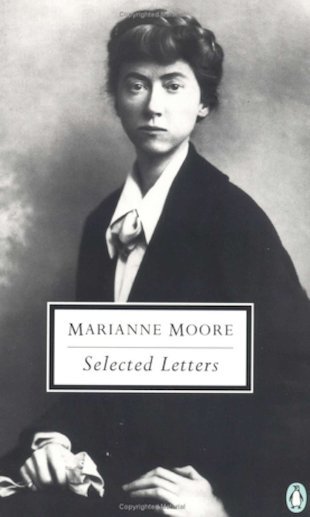
Marianne Moore page on Amazon*
. . . . . . . . . .
Further Reading
“Marianne Moore and the Problem of ‘Marriage,”’ by David Bergman. American Literature 60, no. 2 (1988)
“‘The Tooth of Disputation’: Marianne Moore’s ‘Marriage,'” by Lynn Keller and Cristanne Miller, Sagetrieb 6, no. 3 (1987)
“The Collage of ‘Marriage’: Marianne Moore’s Formal and Cultural Critique,” by Elizabeth W.Joyce, Mosaic 26, no. 4 (1993)
Omissions Are Not Accidents: Gender in the Art of Marianne Moore by Jeanne Heuving (1992)
. . . . . . . . . .
*This is an Amazon Affiliate link. If the product is purchased by linking through, Literary Ladies Guide receives a modest commission, which helps maintain our site and helps it to continue growing!
The post “Marriage” — A Modernist Poem by Marianne Moore (1923) appeared first on Literary Ladies Guide.



